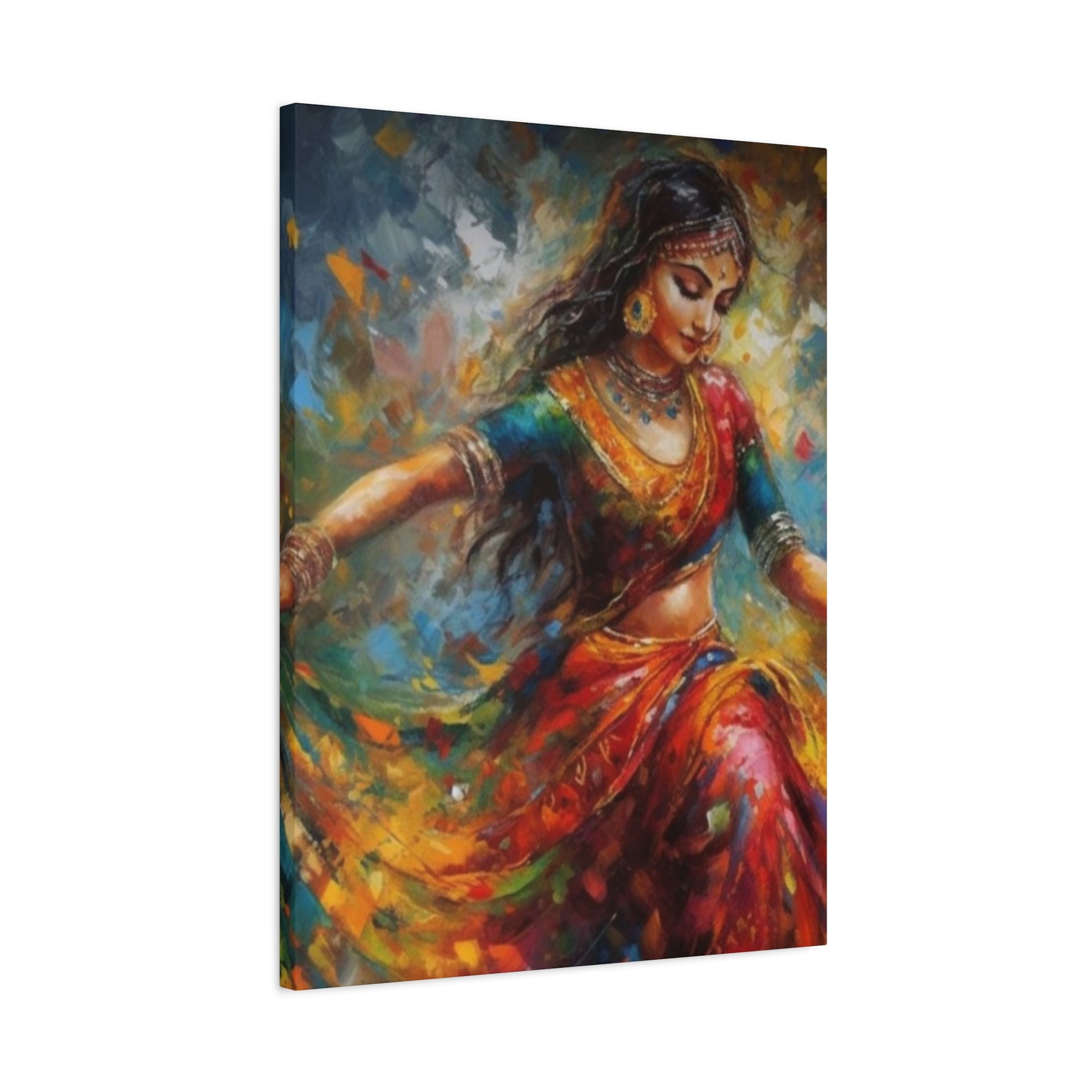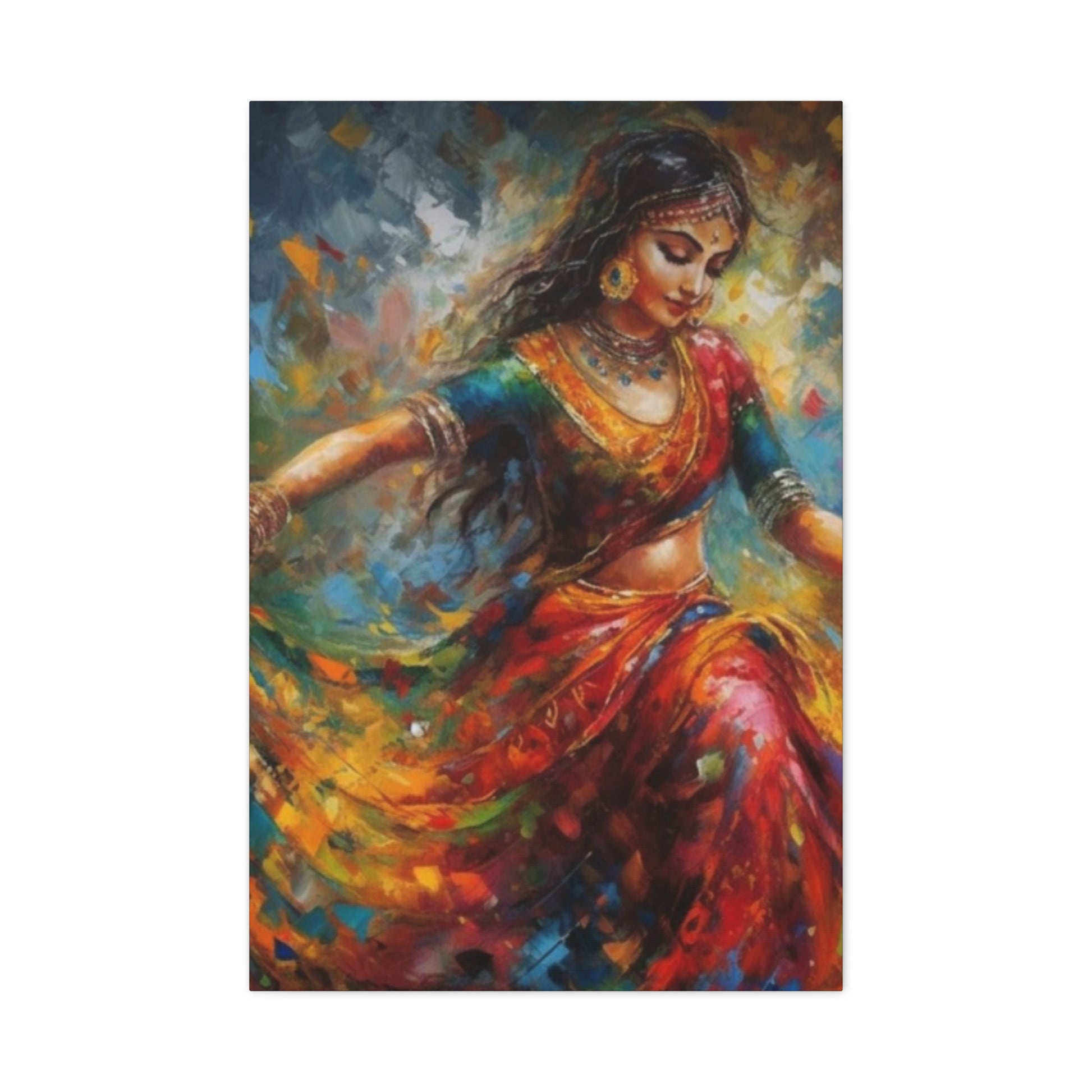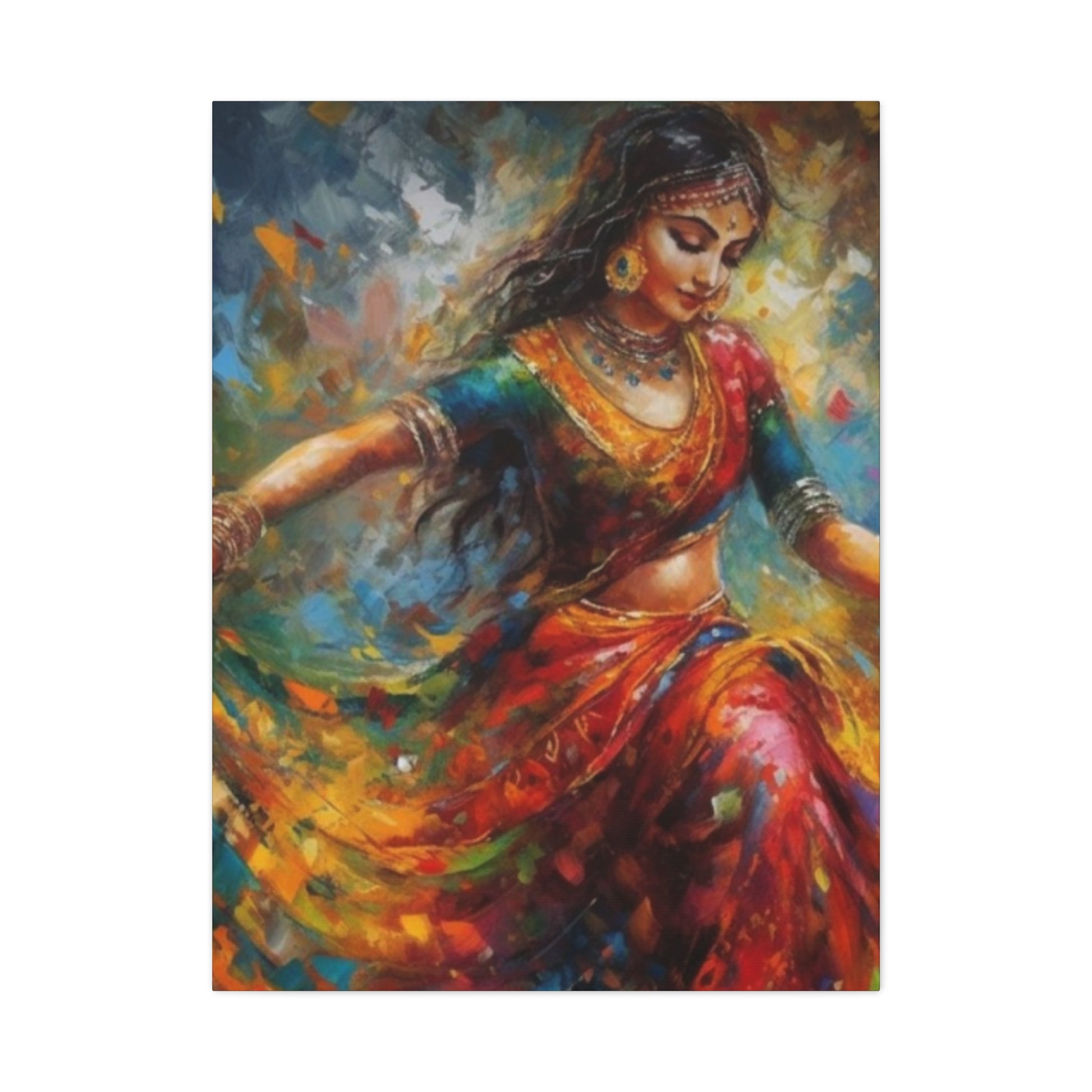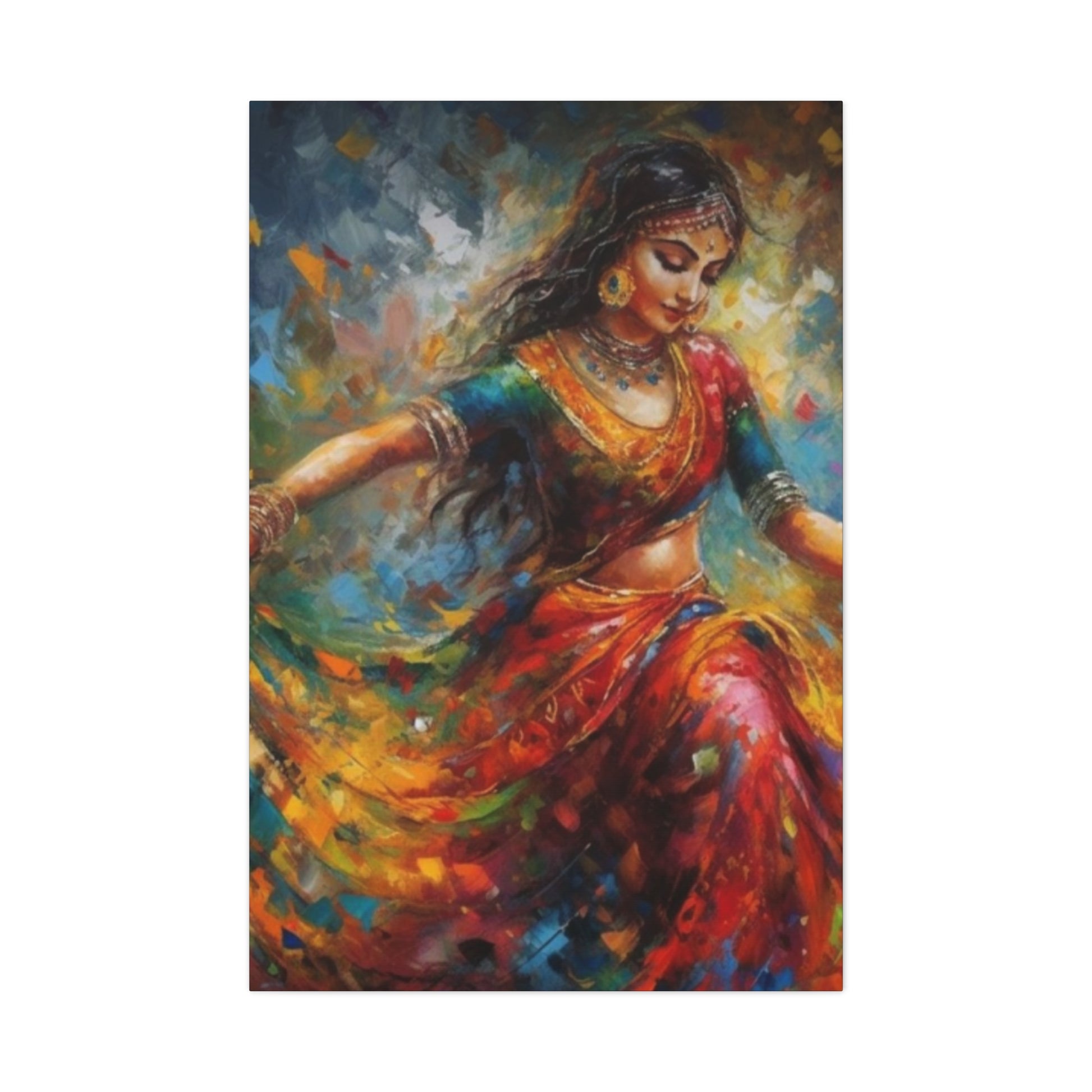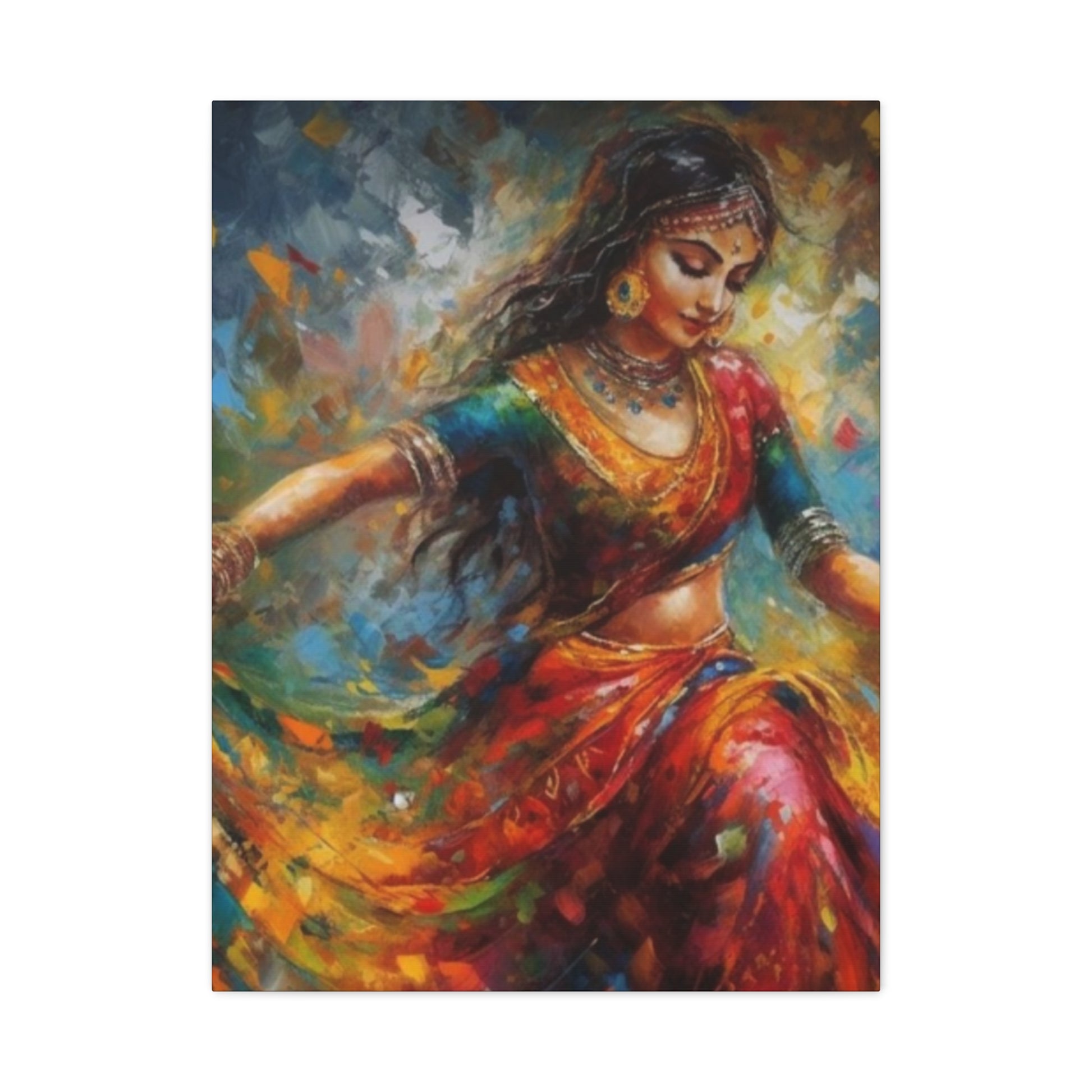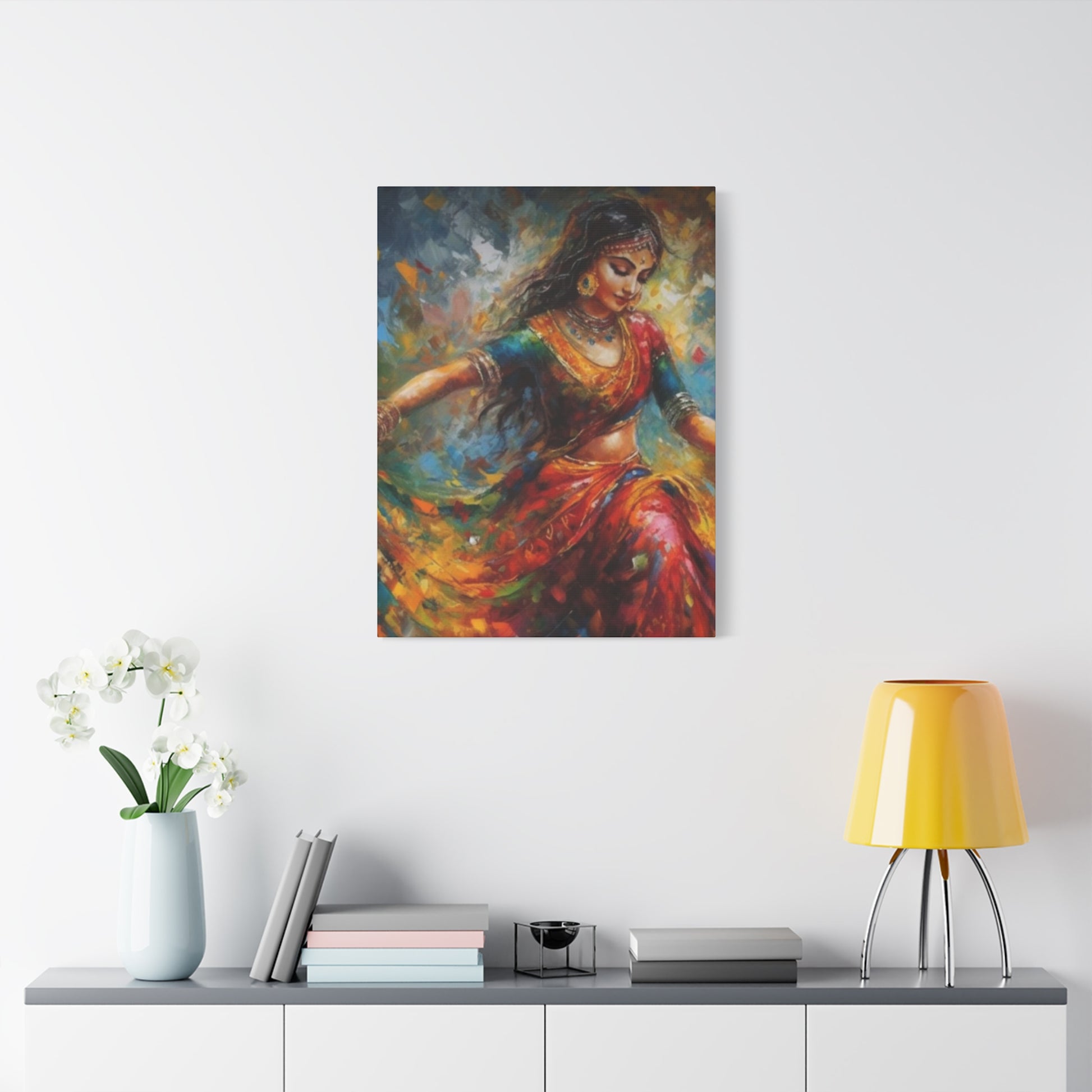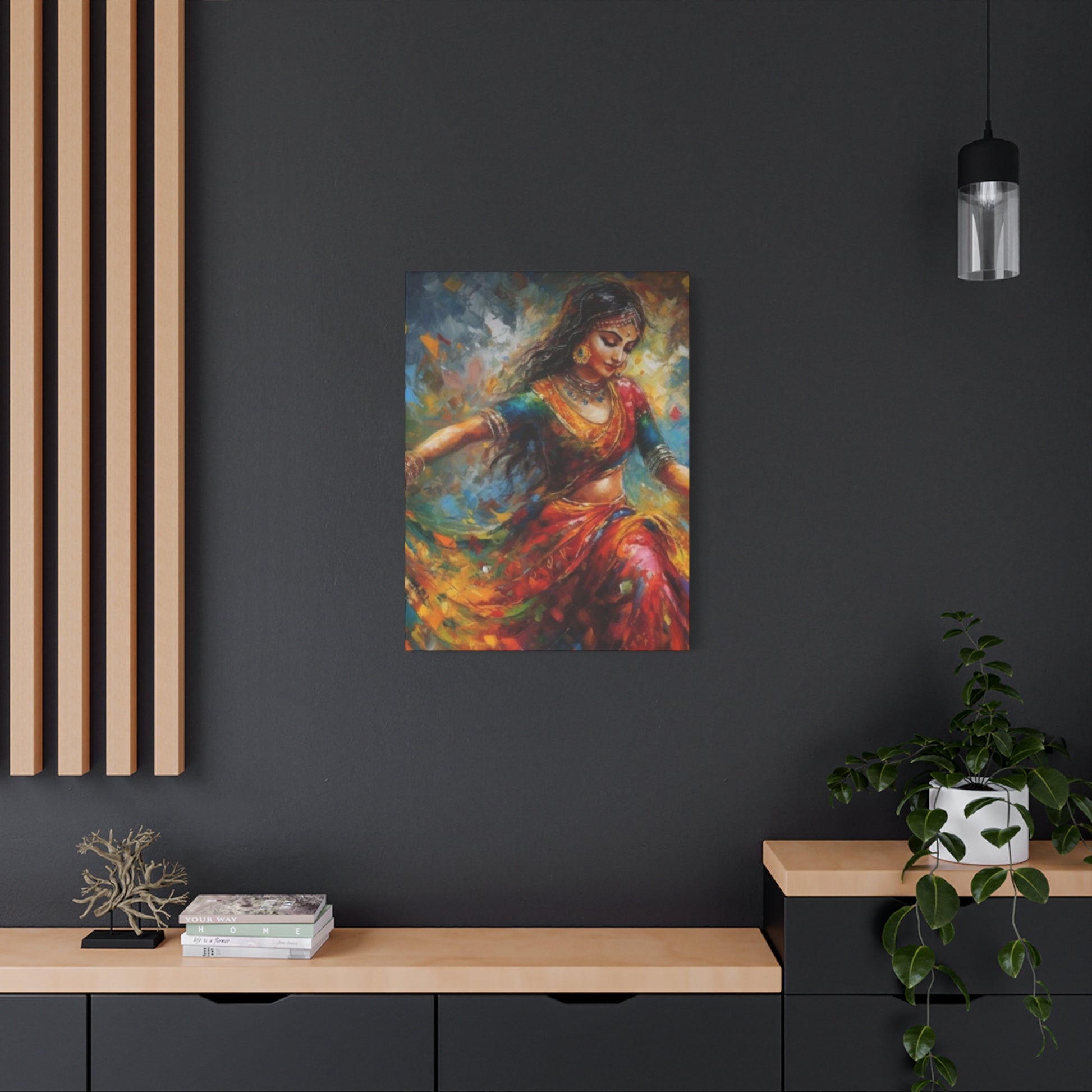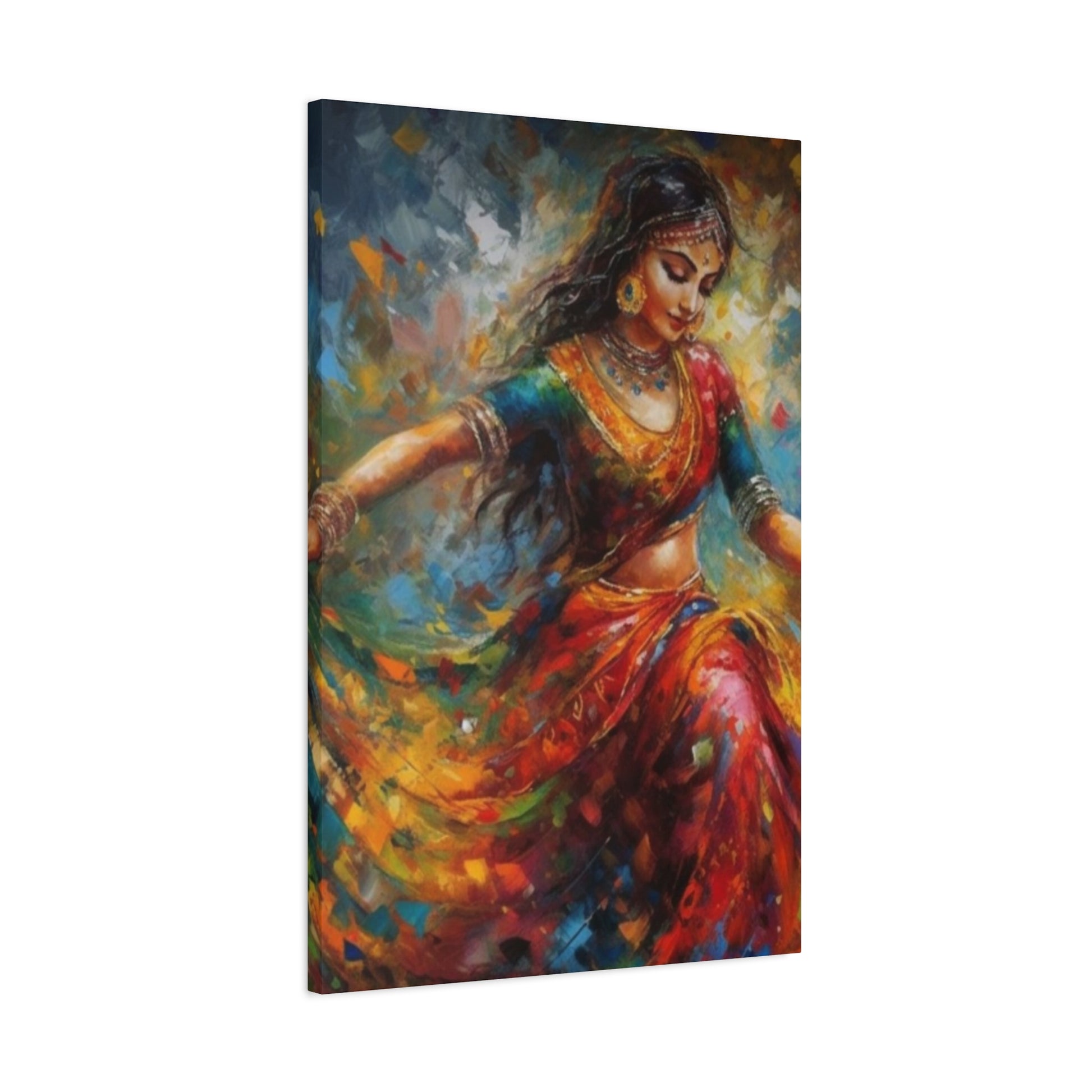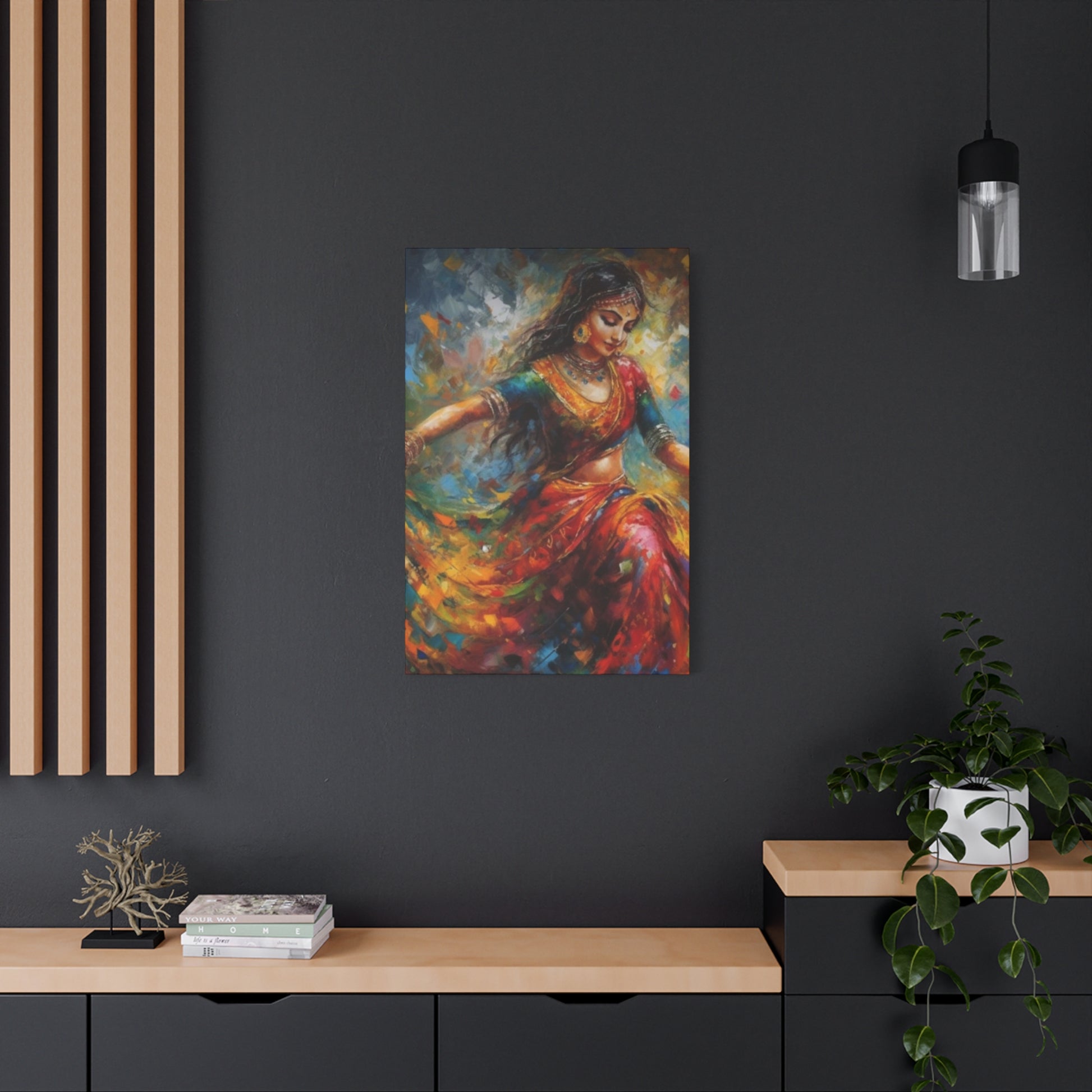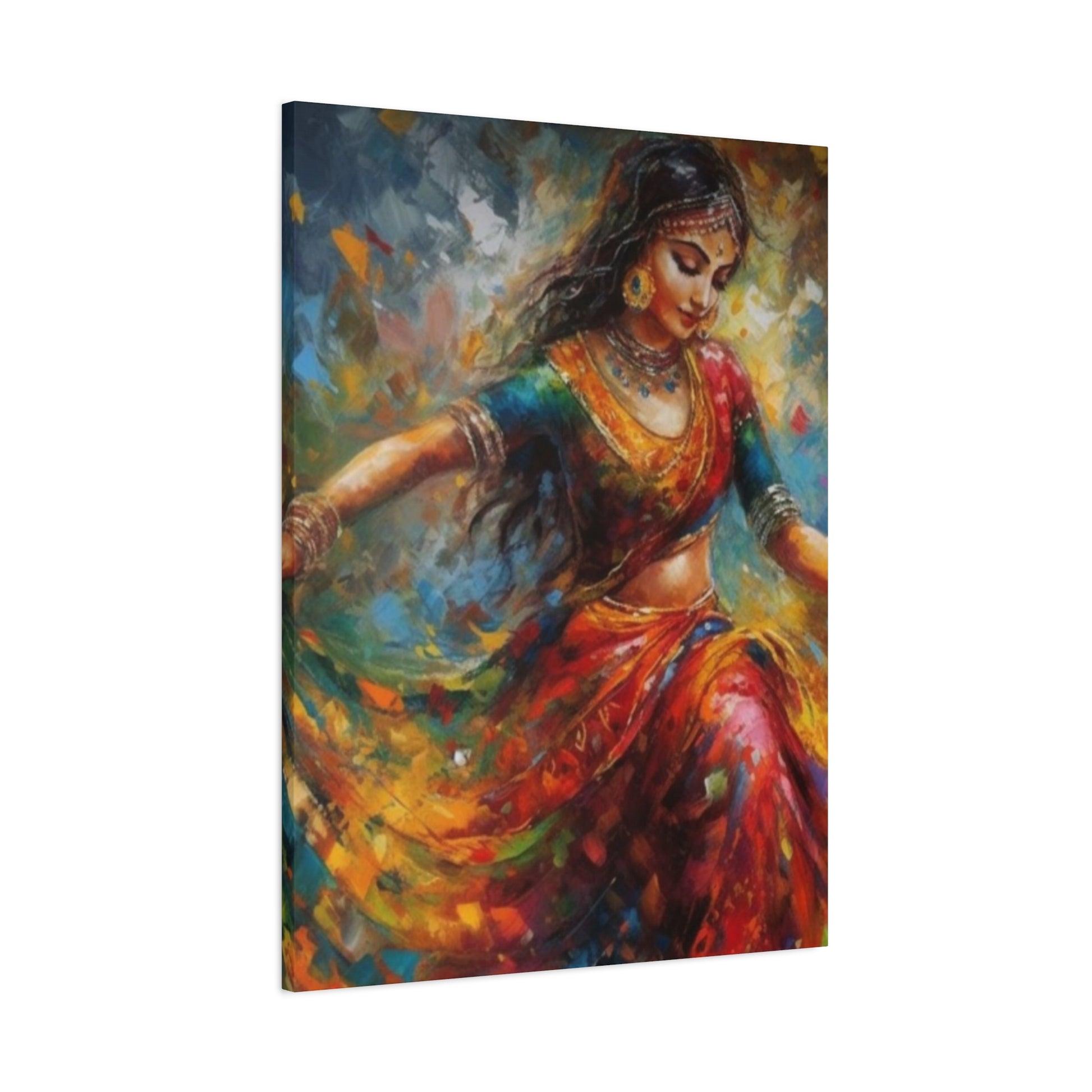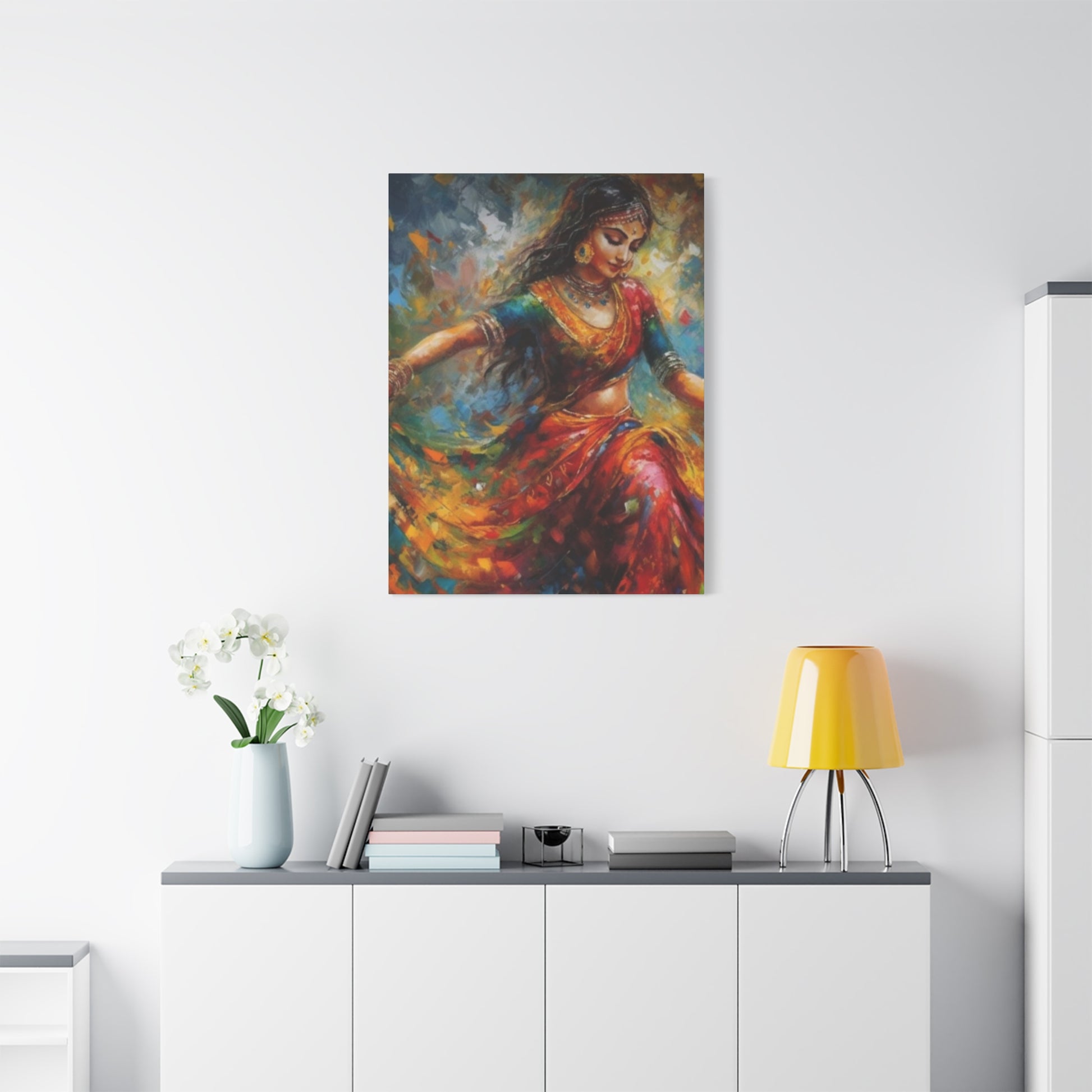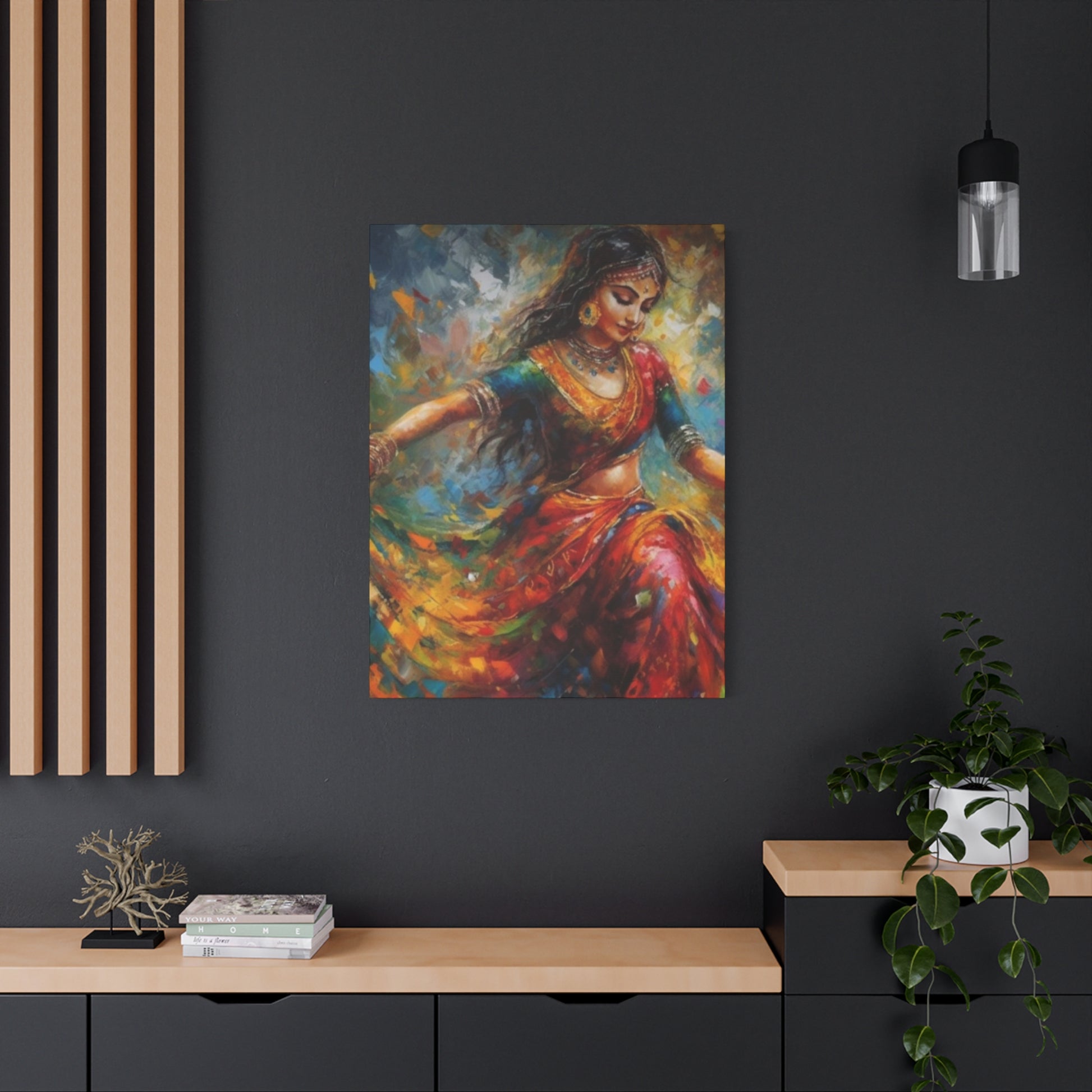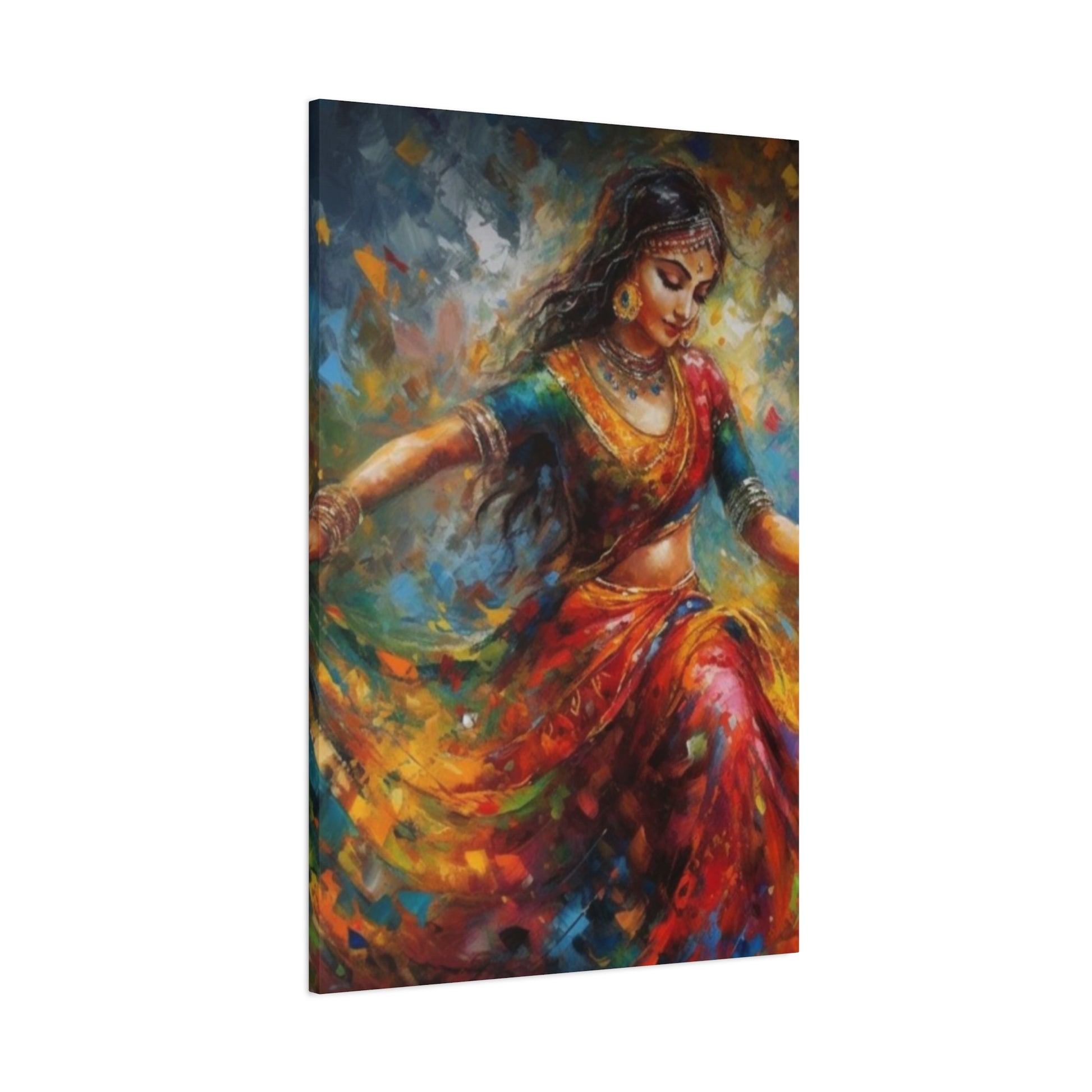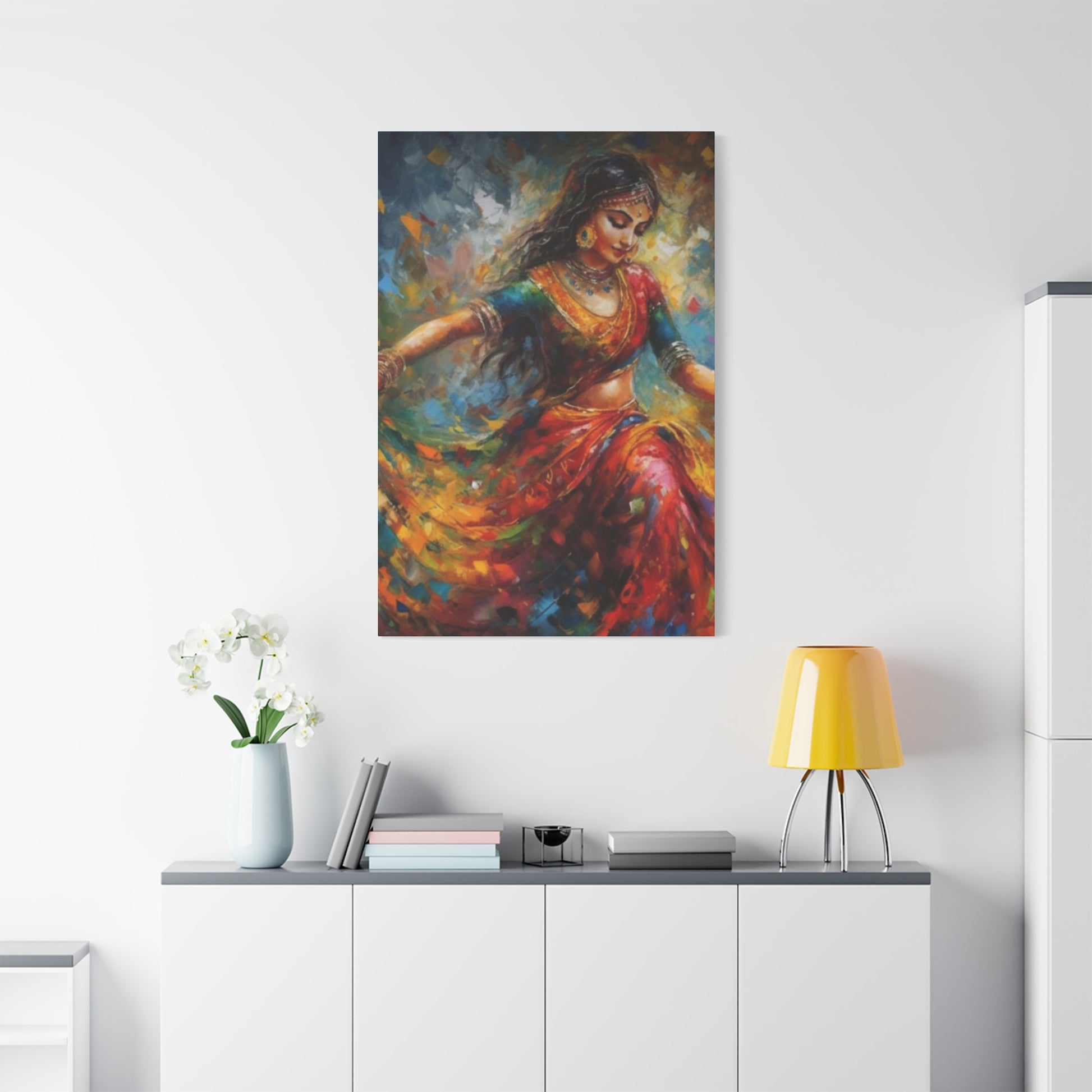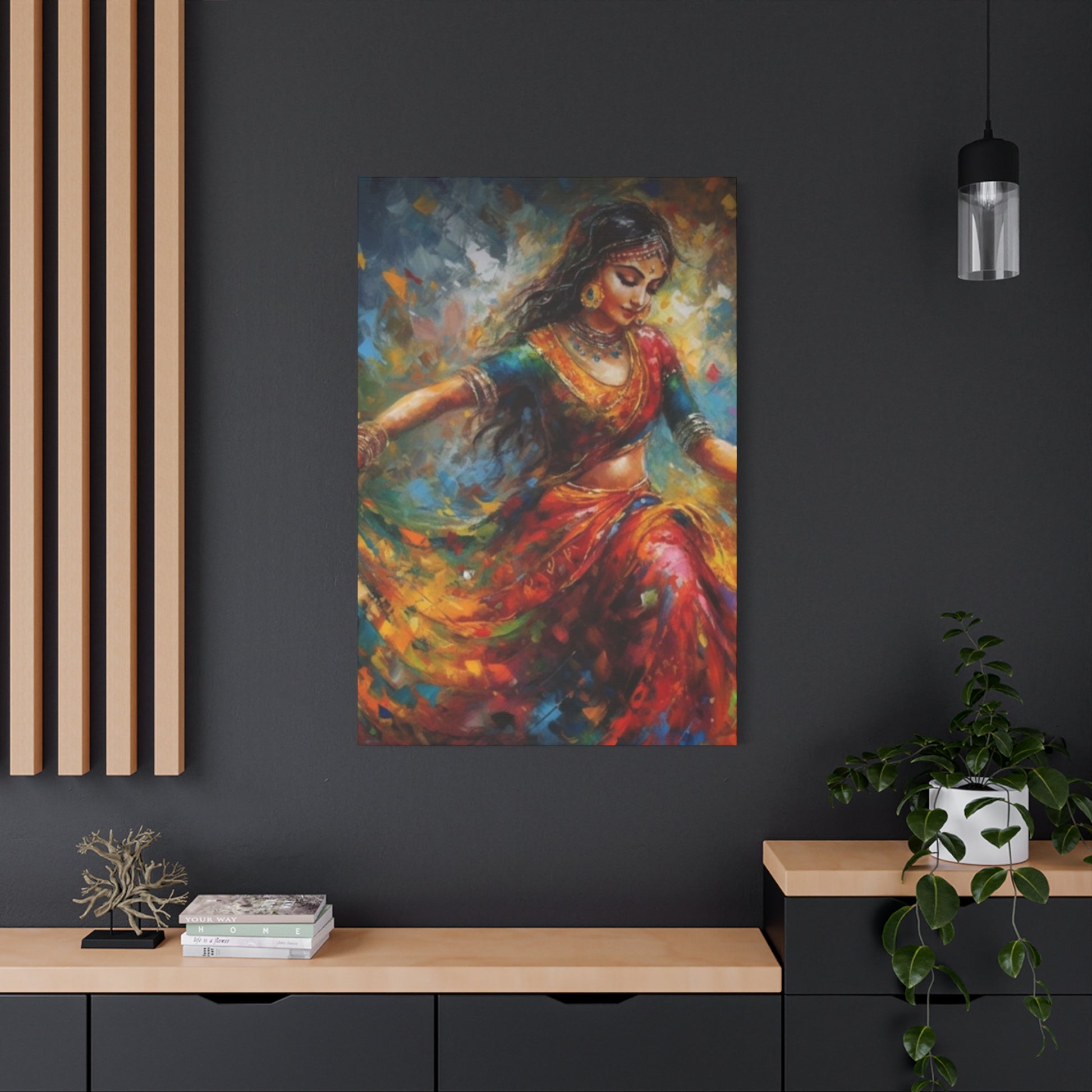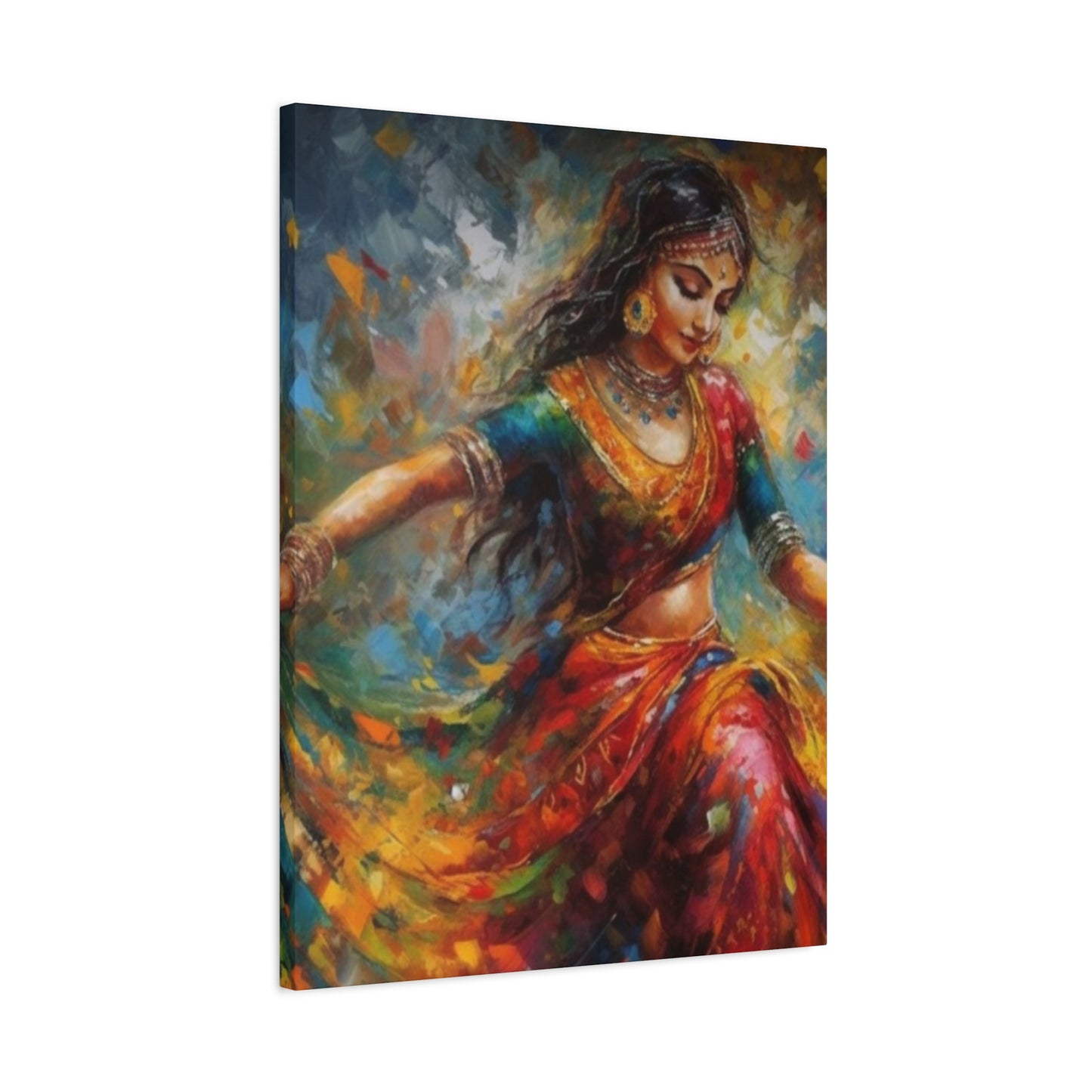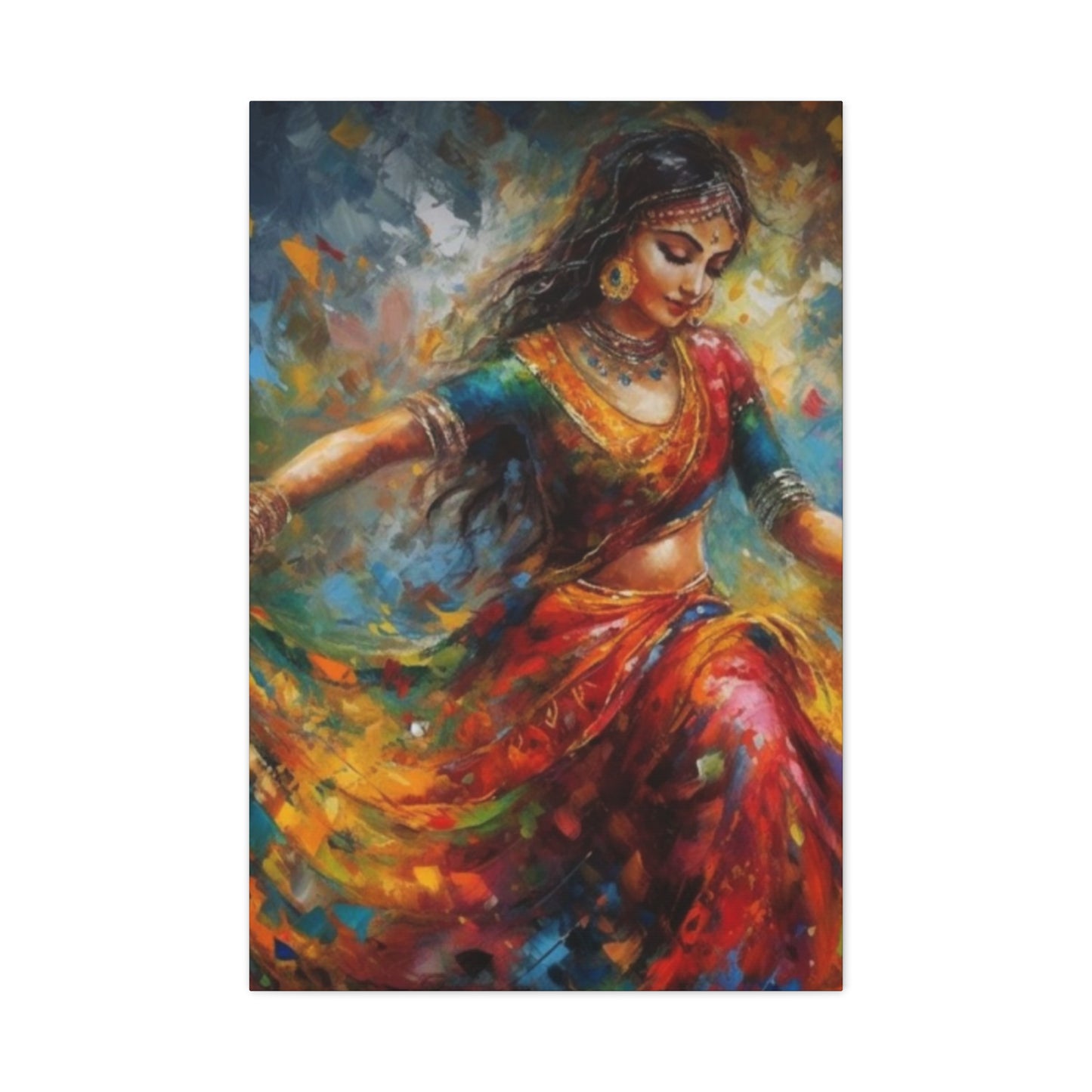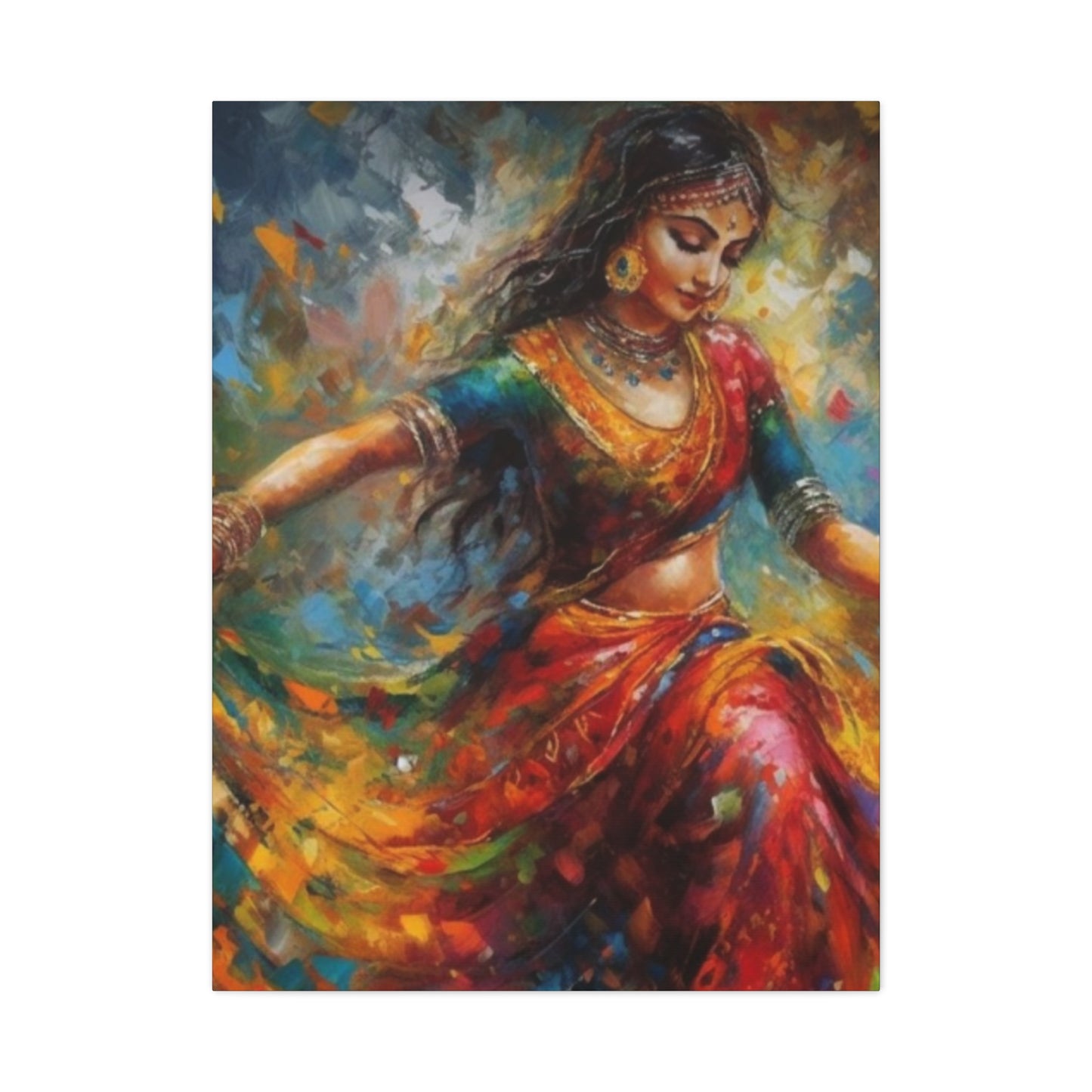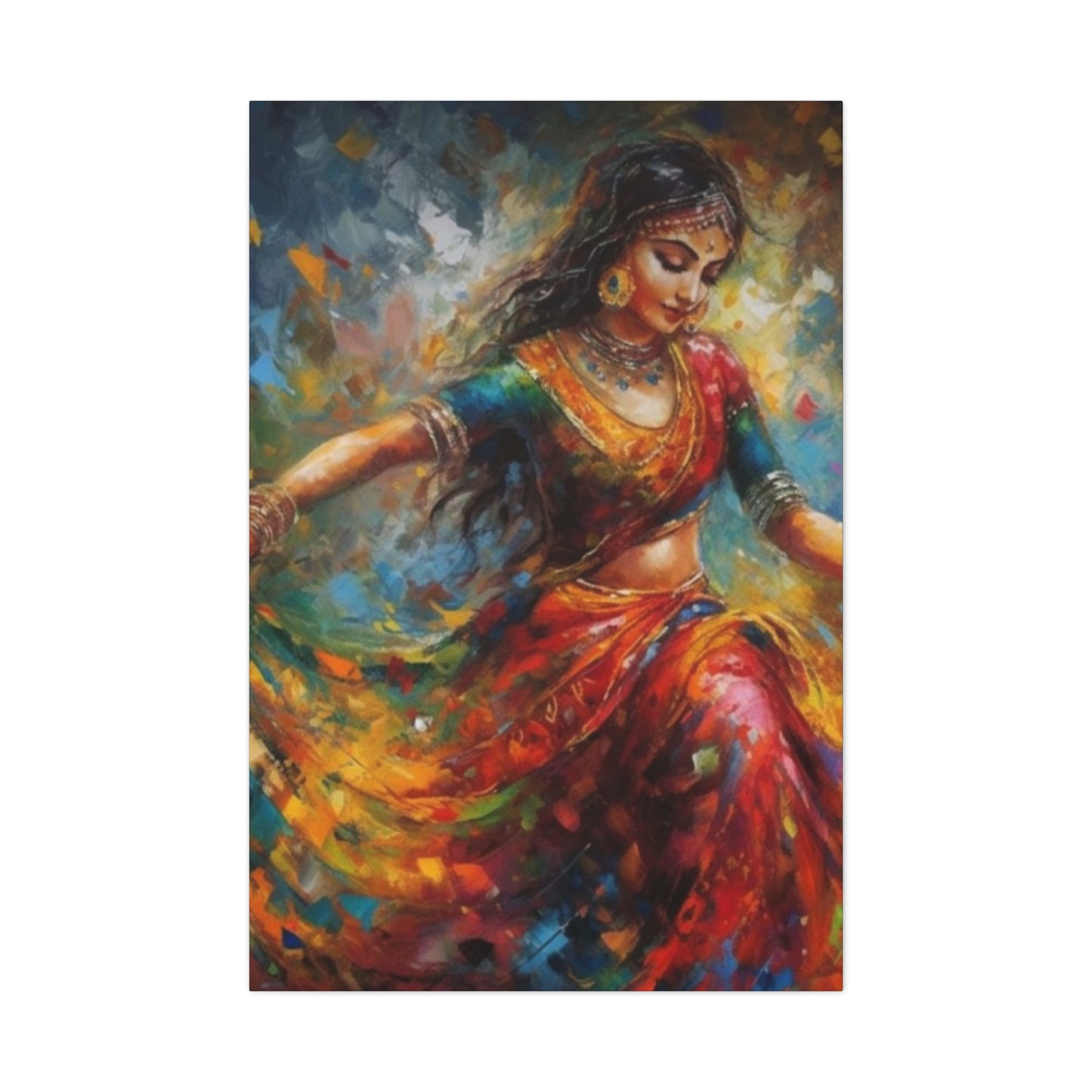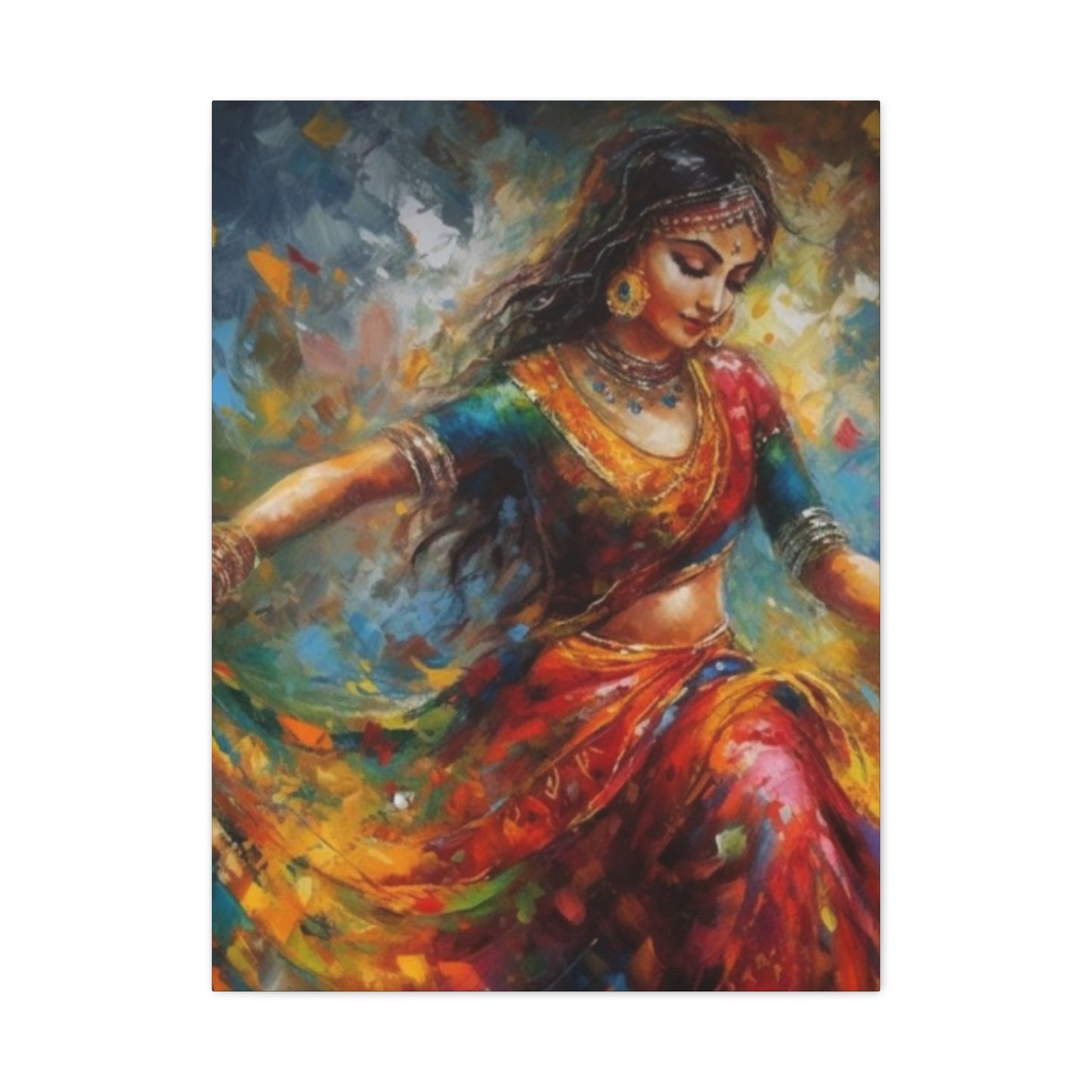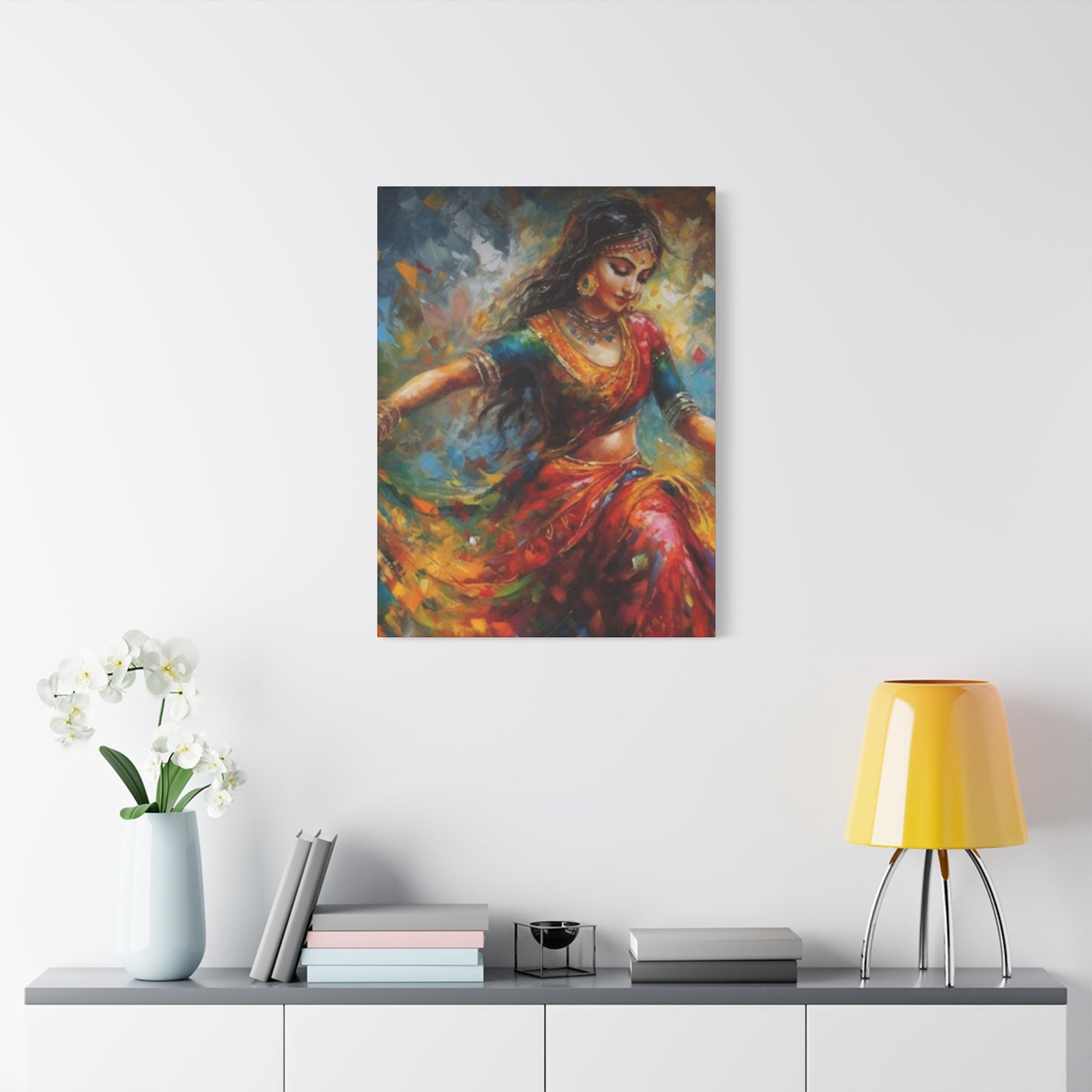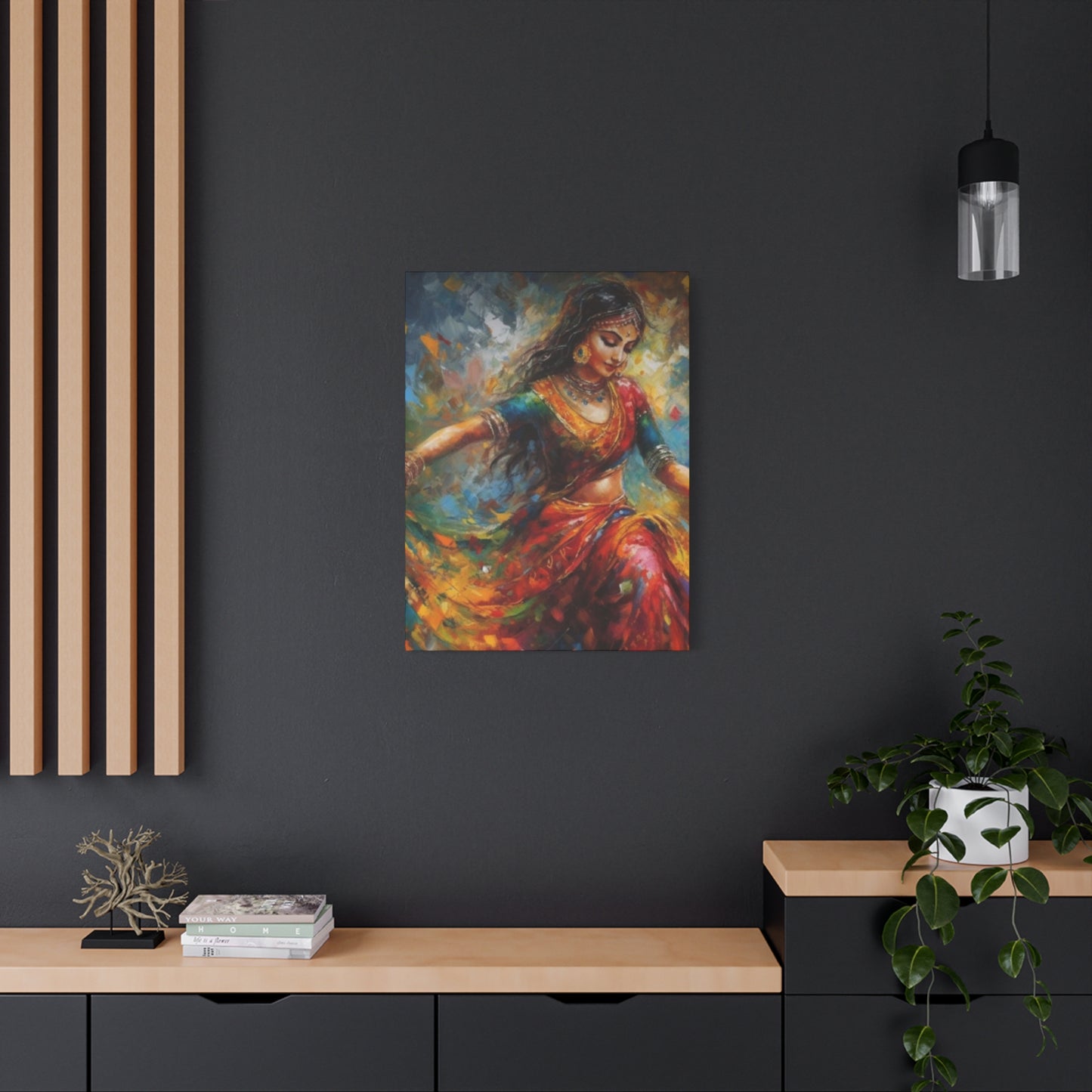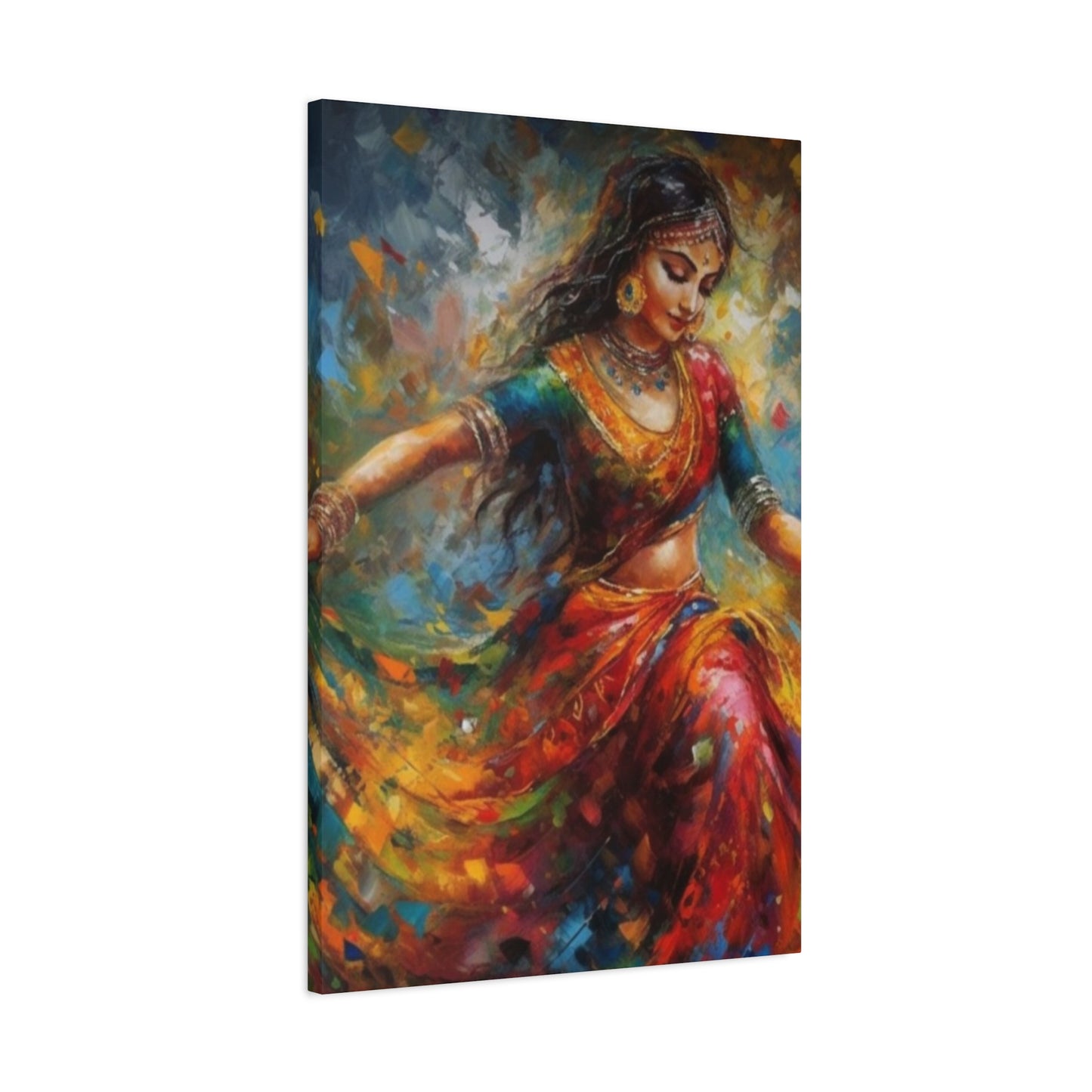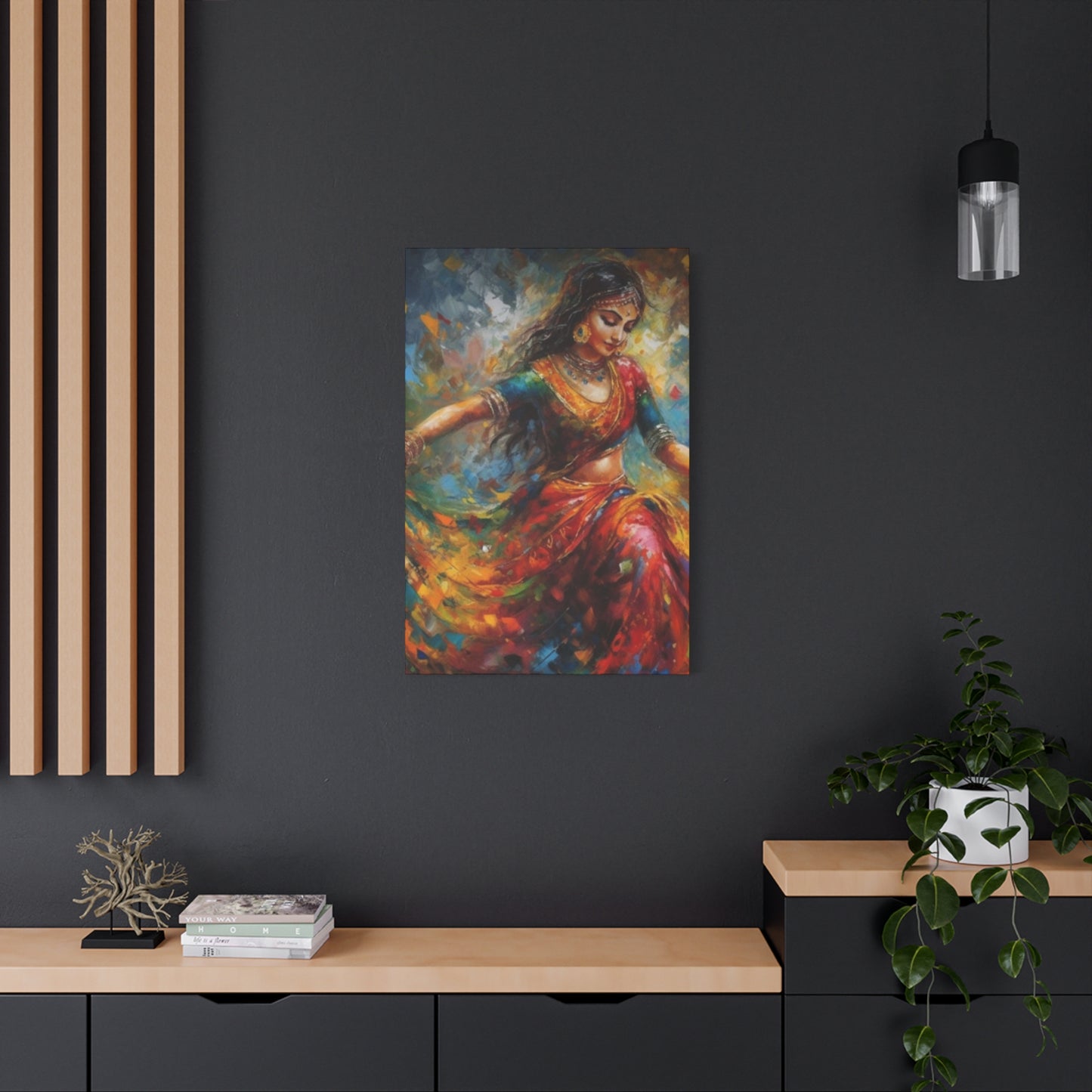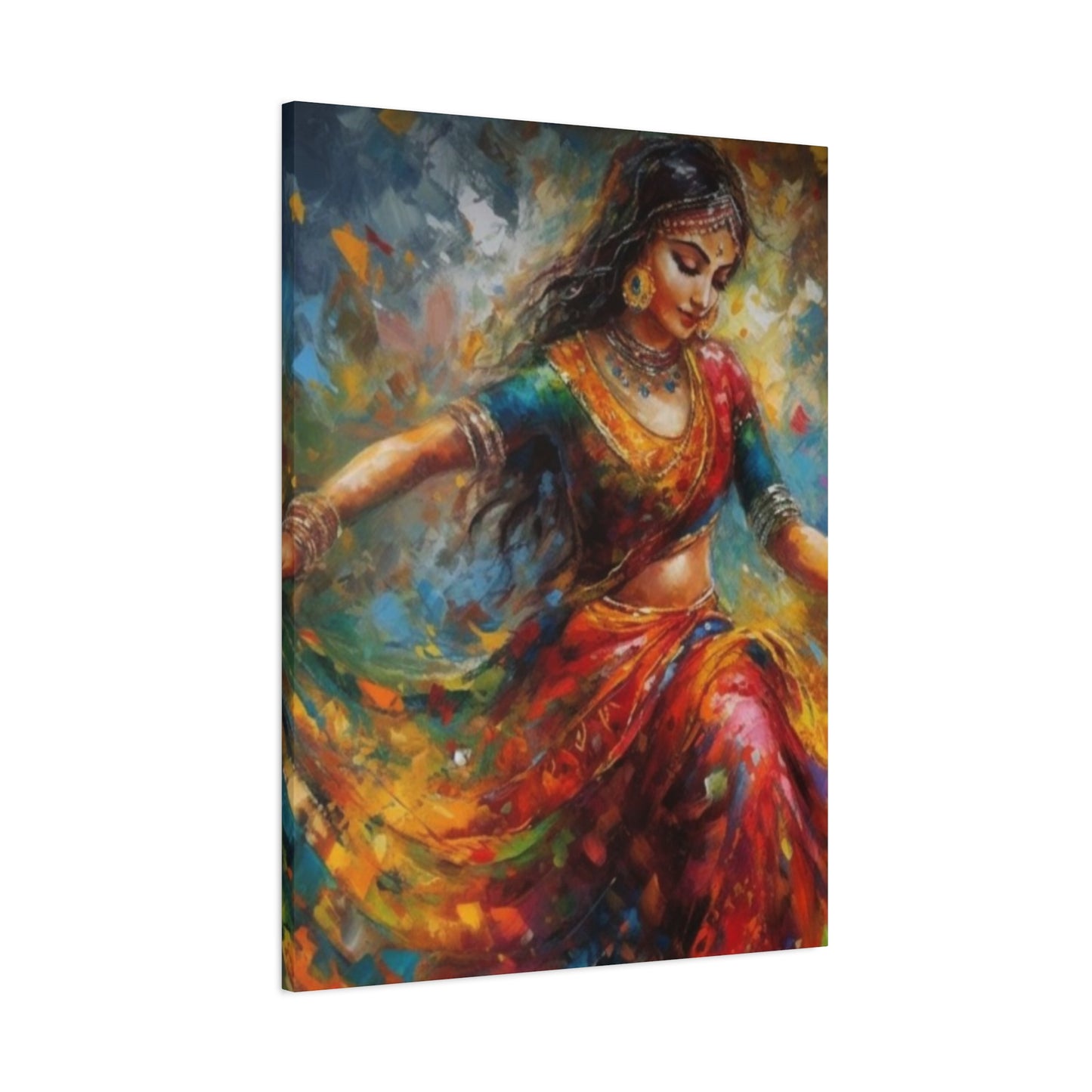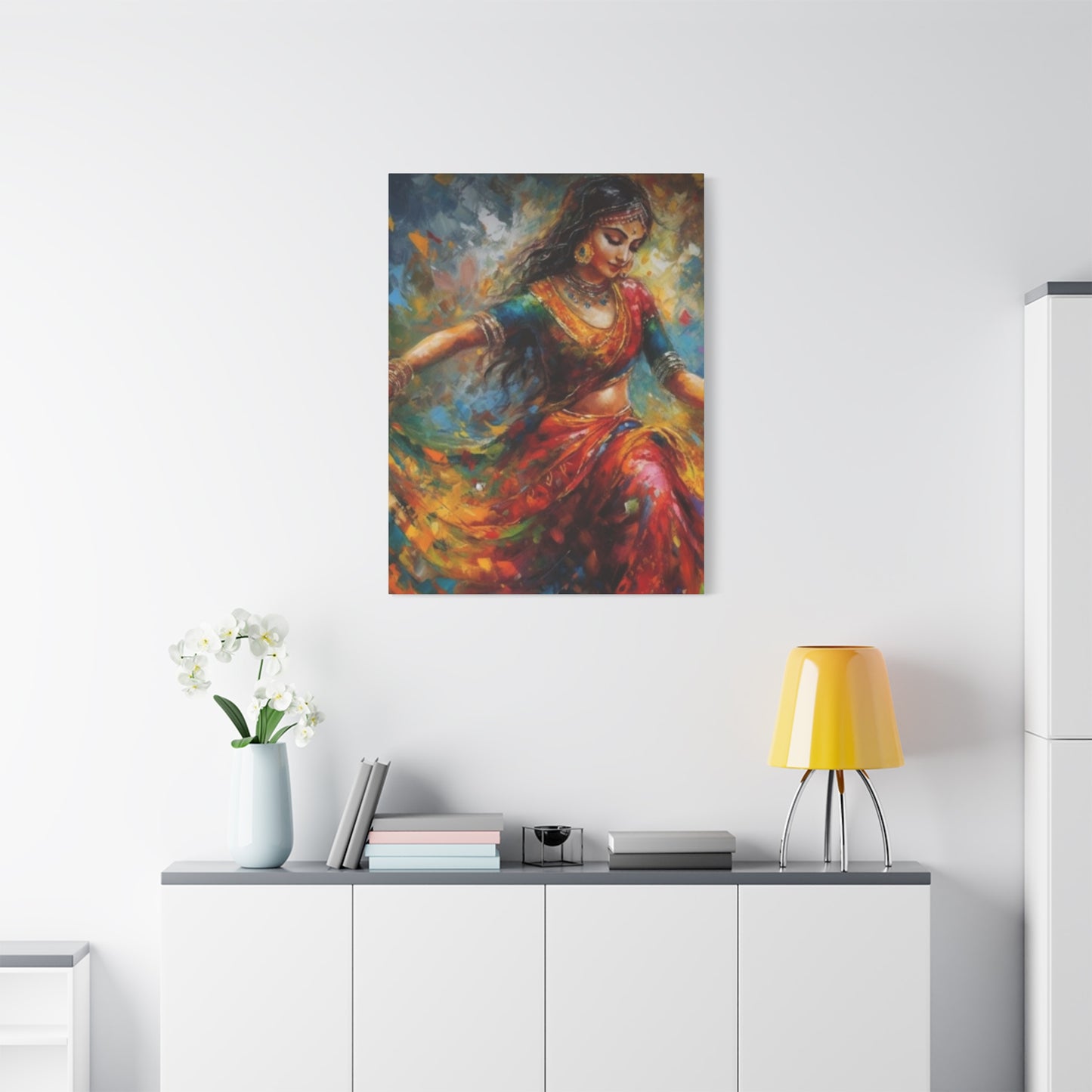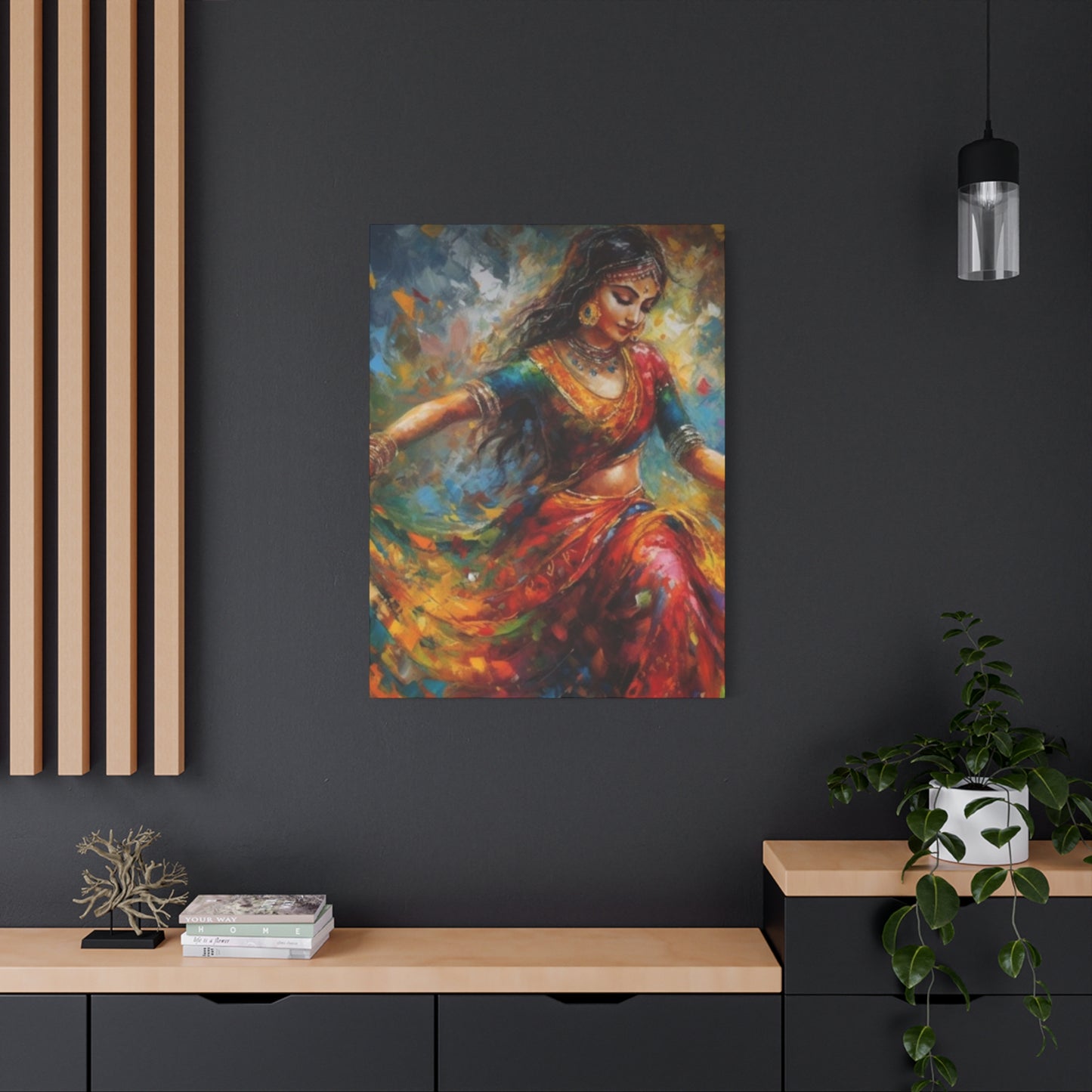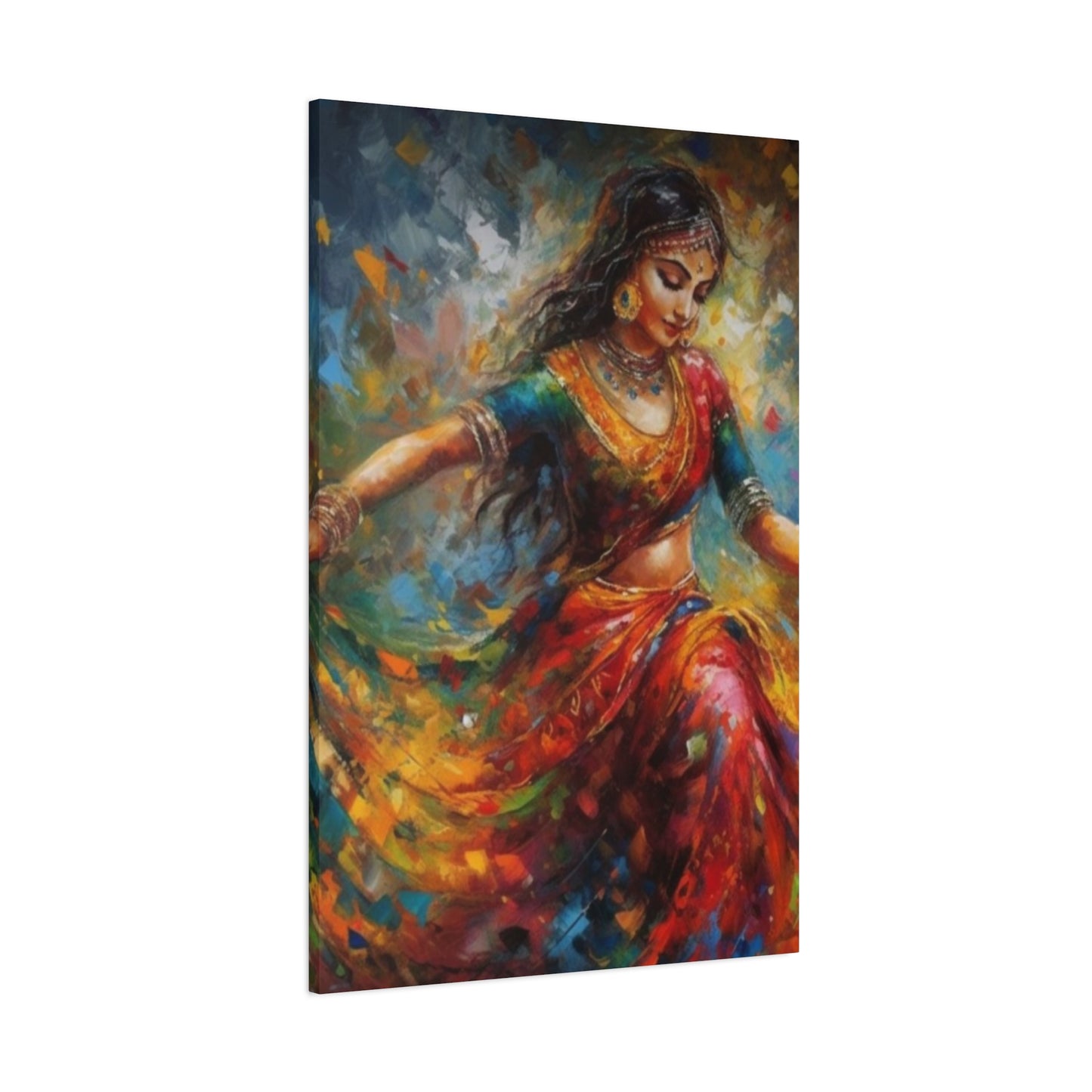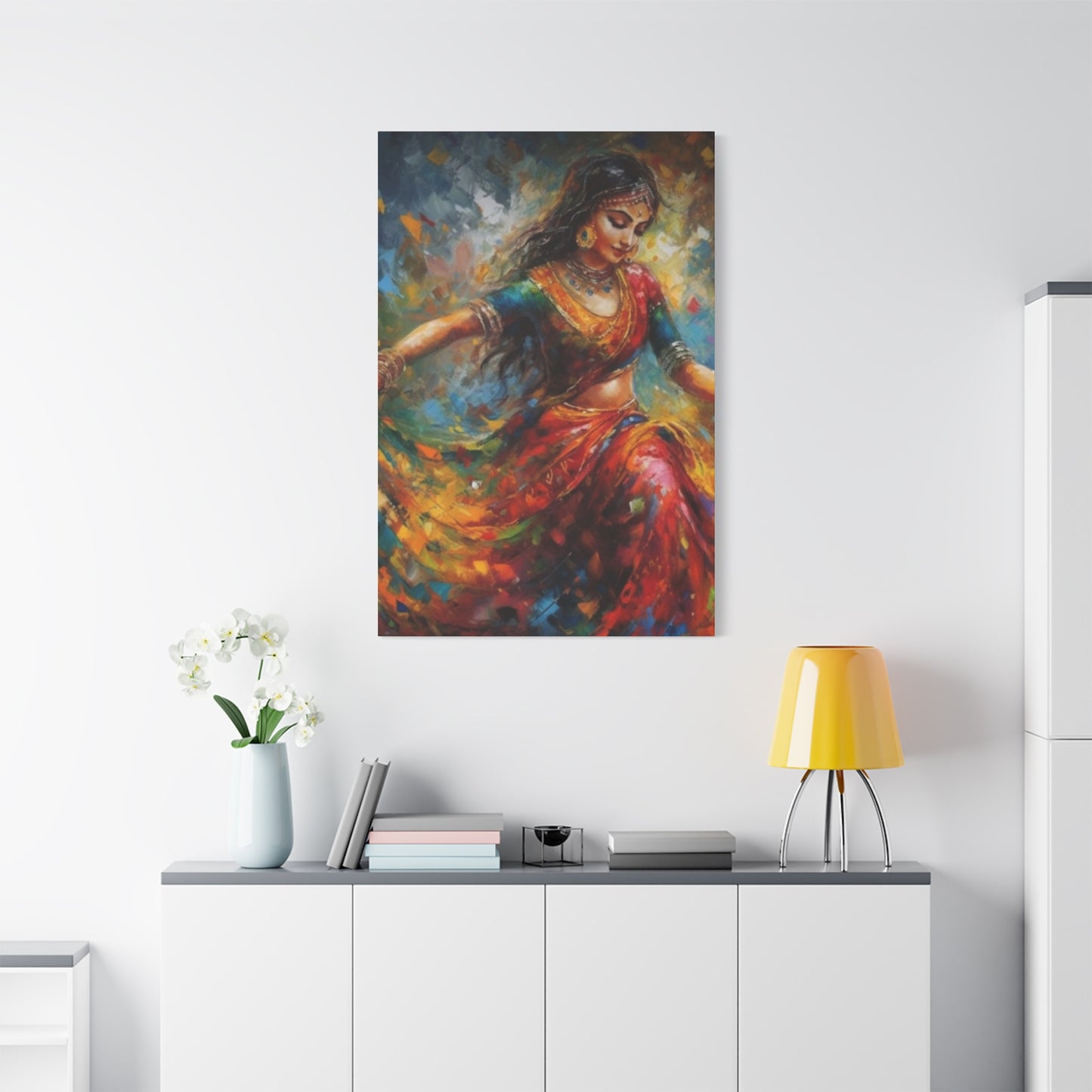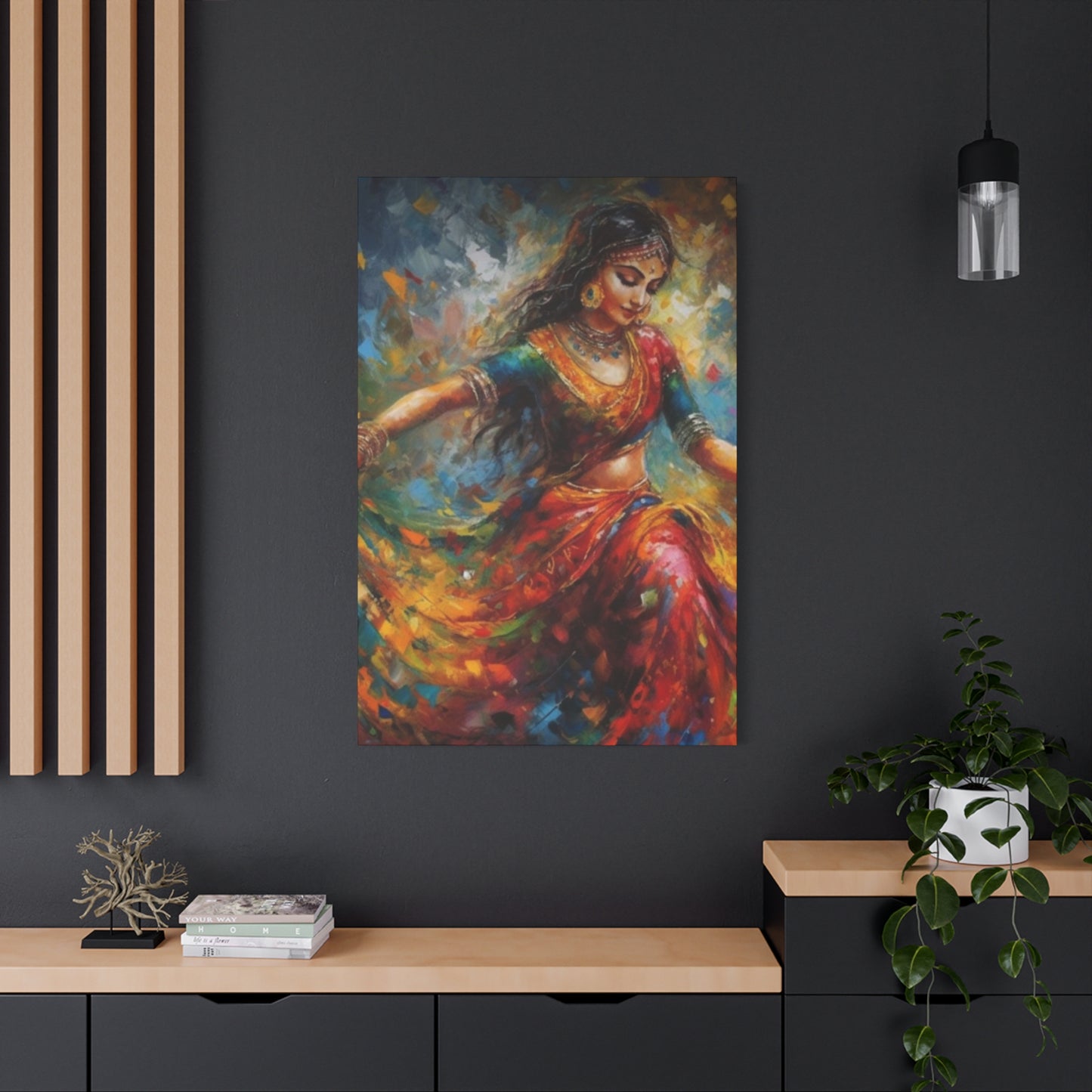Beautiful Indian Women Wall Art: Celebrating Cultural Heritage
The portrayal of Indian women in artistic expressions has deep roots that stretch back thousands of years, representing not just aesthetic beauty but also cultural, spiritual, and social significance. Ancient cave paintings, temple sculptures, and manuscript illustrations have consistently featured feminine figures as central elements, showcasing their importance in Indian civilization. These artistic representations evolved from simple figurative drawings to complex, symbolically rich portrayals that capture the essence of Indian womanhood across different eras.
Traditional Indian art forms like Madhubani, Warli, Tanjore painting, and Rajasthani miniatures have always celebrated the feminine form with remarkable reverence and artistic sophistication. The depiction of women in these art forms goes beyond mere physical representation, incorporating layers of meaning that reflect their roles as nurturers, warriors, deities, and keepers of cultural traditions. Artists throughout history have used various techniques, color palettes, and symbolic elements to convey the multifaceted nature of Indian women, creating a rich tapestry of visual narratives that continue to inspire contemporary wall art.
The historical context of these representations reveals how Indian women have been perceived and honored across different periods. From the Gupta era's graceful sculptures to the Mughal period's delicate miniatures, each artistic movement contributed unique perspectives on feminine beauty and strength. This historical foundation provides the backdrop for understanding why contemporary Indian women wall art resonates so deeply with modern audiences, connecting them to their cultural heritage while celebrating timeless ideals of beauty and grace.
Regional Artistic Styles and Their Unique Characteristics
India's diverse regional artistic traditions have each developed distinct approaches to portraying women in wall art, creating a rich variety of styles that reflect local customs, beliefs, and aesthetic preferences. The Bengal school of art, for instance, emphasizes flowing lines and ethereal beauty, often depicting women in contemplative poses that suggest inner depth and spiritual awareness. These artworks typically feature muted color palettes with strategic use of gold accents, creating pieces that exude elegance and sophistication suitable for modern interior spaces.
Rajasthani art traditions bring bold colors and intricate patterns to their depictions of women, often showing them in elaborate traditional attire adorned with jewelry and surrounded by decorative motifs. The characteristic use of vibrant reds, deep blues, and gold leaf creates striking wall art pieces that can serve as focal points in contemporary homes. These artworks often incorporate architectural elements, floral patterns, and geometric designs that frame the central feminine figure, creating compositions that are both culturally authentic and visually compelling.
South Indian artistic traditions, particularly those from Tamil Nadu and Kerala, offer yet another perspective on feminine representation. Here, women are often depicted in classical dance poses, showcasing the region's rich performing arts heritage. The emphasis on graceful hand gestures, expressive eyes, and flowing silk garments creates wall art that captures movement and emotion. These regional variations ensure that there is a style of Indian women wall art to suit every aesthetic preference while maintaining authentic cultural connections.
Symbolic Meanings in Indian Women Wall Art
The use of color in Indian women wall art carries profound symbolic significance that extends far beyond mere aesthetic appeal. Traditional Indian color theory associates specific hues with various aspects of feminine energy, spiritual qualities, and cultural values. Red, perhaps the most significant color in Indian culture, represents fertility, prosperity, and marital bliss when used in depictions of women. Wall art featuring women in red garments or surrounded by red elements often symbolizes celebration, passion, and life force energy.
Blue holds special significance in Indian spirituality and is often used to represent divine feminine energy, particularly in depictions inspired by goddesses like Durga or Lakshmi. Wall art incorporating deep blue tones suggests wisdom, protection, and spiritual depth, making such pieces particularly suitable for meditation spaces or areas where tranquility is desired. The psychological impact of blue in Indian women wall art creates a sense of calm and introspection while maintaining cultural authenticity.
Yellow and gold tones frequently appear in Indian women wall art, symbolizing knowledge, prosperity, and divine blessings. These warm colors create welcoming, positive energy in living spaces while honoring traditional associations with learning and wealth. Green represents growth, harmony, and new beginnings, often featured in depictions of young women or scenes celebrating nature's abundance. The thoughtful use of these traditional color meanings ensures that Indian women wall art serves not just as decoration but as a source of positive energy and cultural connection.
Contemporary Interpretations of Traditional Themes
Modern artists working with Indian women wall art themes have found innovative ways to bridge traditional aesthetics with contemporary sensibilities, creating pieces that speak to today's audiences while honoring historical artistic principles. These contemporary interpretations often simplify traditional elements, focusing on essential forms and colors that capture the essence of classical Indian feminine representation without overwhelming modern interior spaces. The result is wall art that feels both timeless and current, suitable for various decorating styles from minimalist to eclectic.
Digital art techniques have opened new possibilities for creating Indian women wall art that maintains cultural authenticity while incorporating modern artistic methods. Artists can now experiment with layering, texture effects, and color gradations that were impossible with traditional materials, creating visually striking pieces that translate beautifully to large-scale wall applications. These digital interpretations often combine photographic elements with painted details, creating hybrid artworks that feel both realistic and stylized.
Contemporary artists also explore abstract interpretations of traditional Indian women themes, using geometric patterns, color fields, and stylized forms to suggest feminine beauty and cultural identity without literal representation. These abstract approaches make Indian women wall art accessible to broader audiences while maintaining meaningful connections to cultural heritage. The versatility of contemporary interpretations ensures that there are options suitable for every taste and interior design preference.
Traditional Dress and Jewelry Representation in Wall Art
The depiction of traditional Indian clothing and jewelry in women wall art serves as a celebration of the country's rich textile and craftsmanship heritage. Sarees, lehengas, salwar kameez, and other traditional garments are rendered with meticulous attention to fabric textures, draping styles, and regional variations. Artists often emphasize the flowing nature of these garments, using curved lines and color gradations to suggest the movement and grace inherent in traditional Indian dress. These detailed representations help preserve and promote awareness of India's textile traditions.
Jewelry holds particular significance in Indian women wall art, with each piece carrying cultural and symbolic meaning. Traditional ornaments like chandbali earrings, maang tikka, necklaces, bangles, and anklets are often depicted with careful attention to their design details and placement. The representation of jewelry in wall art serves multiple purposes: it adds visual richness to compositions, demonstrates the artist's skill in rendering fine details, and communicates information about the subject's social status, regional identity, and cultural background.
The artistic challenge of representing fabric textures and jewelry details in wall art has led to innovative techniques that translate beautifully to modern printing and display methods. Artists use various shading techniques, color layering, and line work to create the illusion of silk's luster, gold's gleam, and precious stones' sparkle. These technical achievements ensure that traditional dress and jewelry representation in Indian women wall art maintains its visual impact whether displayed as original paintings or high-quality prints.
Spiritual and Religious Iconography
Indian women wall art often incorporates spiritual and religious elements that reflect the deep connection between feminine divinity and cultural identity in Indian traditions. Representations of goddesses like Lakshmi, Saraswati, Durga, and Parvati appear frequently in wall art, each carrying specific symbolic attributes and color associations. These divine feminine figures are often depicted with multiple arms holding various symbolic objects, surrounded by lotuses, peacocks, tigers, or other sacred animals that enhance their spiritual significance and visual appeal.
The inclusion of religious symbols such as the Om symbol, lotus flowers, Sanskrit mantras, and geometric yantras adds layers of spiritual meaning to Indian women wall art. These elements are typically integrated seamlessly into compositions, creating pieces that serve both decorative and devotional purposes. For many viewers, such artwork provides daily inspiration and connection to spiritual practices while enhancing their living spaces with culturally meaningful beauty.
Temple architecture elements frequently appear in the backgrounds of spiritual Indian women wall art, providing context and adding visual depth to compositions. Carved pillars, ornate arches, and decorative patterns drawn from famous Indian temples create settings that transport viewers to sacred spaces while celebrating the artistic achievements of Indian craftspeople throughout history. This architectural integration helps create comprehensive artistic statements that honor both feminine divinity and cultural heritage.
Modern Home Decoration Applications
The integration of Indian women wall art into contemporary home decoration requires thoughtful consideration of scale, placement, and complementary design elements. Large-scale pieces work exceptionally well as statement walls in living rooms, dining areas, or bedrooms, creating focal points that anchor entire room designs. The key to successful integration lies in balancing the artwork's cultural richness with modern furnishing choices, ensuring that the space feels cohesive rather than cluttered or culturally mismatched.
Color coordination plays a crucial role in incorporating Indian women wall art into modern homes. The vibrant colors typical of traditional Indian art can be echoed in accent pieces like throw pillows, curtains, or decorative objects, creating visual harmony throughout the space. Alternatively, neutral room palettes can provide striking contrast that makes colorful Indian women wall art pop dramatically, creating sophisticated interiors that celebrate cultural heritage within contemporary contexts.
Lighting considerations are essential for properly displaying Indian women wall art, as these pieces often feature metallic accents, detailed patterns, and rich colors that require appropriate illumination to achieve their full visual impact. Track lighting, picture lights, or strategically placed floor lamps can highlight artwork details while creating ambiance that enhances the overall aesthetic effect. Proper lighting also protects artwork from damage while ensuring that viewers can appreciate the skill and beauty inherent in these cultural treasures.
Cultural Preservation Through Artistic Expression
Indian women wall art serves as an important vehicle for cultural preservation, maintaining connections to traditional values, artistic techniques, and historical narratives that might otherwise be lost in rapidly modernizing societies. Contemporary artists who work in this genre often research historical sources, study traditional techniques, and collaborate with master craftspeople to ensure authenticity in their creations. This dedication to accuracy helps preserve knowledge about traditional art forms while making them accessible to new generations.
Educational aspects of Indian women wall art extend beyond mere decoration, offering opportunities for cultural learning and appreciation. Viewers encountering these artworks often become curious about the stories, traditions, and techniques they represent, leading to deeper engagement with Indian culture and history. This educational dimension makes Indian women wall art particularly valuable for multicultural households, educational institutions, and cultural centers where cross-cultural understanding is encouraged.
The global popularity of Indian women wall art has created international appreciation for Indian artistic traditions, contributing to cultural diplomacy and mutual understanding between different societies. As these artworks find homes in diverse settings around the world, they serve as ambassadors for Indian culture, promoting positive associations with the country's rich artistic heritage and continuing creative vitality.
Different Art Mediums and Techniques
Traditional painting techniques used in Indian women wall art include watercolor, gouache, tempera, and oil-based mediums, each offering unique advantages for different artistic goals. Watercolor techniques allow for delicate color gradations and transparent effects that work particularly well for depicting flowing fabrics and soft skin tones. Master artists often combine multiple mediums within single works, using watercolor for backgrounds and gouache for detailed foreground elements, creating depth and visual interest.
Contemporary digital techniques have revolutionized the creation and reproduction of Indian women wall art, allowing artists to experiment with effects and corrections impossible with traditional mediums. Digital painting software enables precise color matching, easy pattern replication, and seamless blending effects that enhance the final artwork's visual impact. Additionally, digital techniques facilitate the creation of multiple size variations and format adaptations, making artworks suitable for various wall spaces and printing requirements.
Mixed media approaches combine traditional and modern techniques, incorporating elements like fabric pieces, gold leaf, textured papers, and three-dimensional embellishments into Indian women wall art. These techniques add tactile qualities and visual depth that engage viewers more completely while honoring traditional Indian artistic practices that often combined multiple materials and techniques within single works. The result is artwork that appeals to contemporary tastes while maintaining authentic cultural connections.
Portrait Styles and Facial Expression Techniques
The portrayal of facial expressions in Indian women wall art requires sophisticated understanding of cultural beauty standards, emotional representation, and artistic technique. Traditional Indian art emphasizes particular facial features like large, expressive eyes, delicate nose shapes, and graceful neck lines that conform to classical beauty ideals described in ancient texts. Contemporary artists working in this tradition must balance these idealized features with realistic proportions and individual character to create engaging, believable portraits.
Eye representation holds special significance in Indian women wall art, as eyes are considered windows to the soul and indicators of spiritual development. Artists employ various techniques to create compelling eye expressions, including detailed iris rendering, strategic highlight placement, and careful attention to eyebrow shapes and eyelash patterns. The surrounding eye makeup and decorative elements like bindi and kajal further enhance the expressive power of the eyes while adding cultural authenticity.
Emotional range in Indian women wall art spans from serene meditation to joyful celebration, with each expression requiring different technical approaches. Artists must understand how facial muscles create various expressions while maintaining the grace and dignity traditionally associated with Indian feminine ideals. This balance between emotional authenticity and cultural idealization creates portrait styles that feel both personal and universal.
Popular Themes and Subject Matter
Classical dance poses form one of the most popular themes in Indian women wall art, celebrating the country's rich performing arts heritage through visual representation. Bharatanatyam, Kathak, Odissi, and other traditional dance forms provide inspiration for artworks that capture graceful movement, elaborate costumes, and expressive storytelling. These dance-themed pieces often incorporate musical instruments, stage elements, and audience figures to create comprehensive scenes that transport viewers to performance spaces.
Festival celebrations offer another rich source of subject matter for Indian women wall art, with depictions of Diwali, Holi, Durga Puja, and regional celebrations showcasing women in their finest traditional attire participating in cultural rituals. These festive themes bring joy and celebration into living spaces while educating viewers about Indian cultural practices and their significance. The vibrant colors and dynamic compositions typical of festival-themed artwork make them particularly suitable for social areas of homes.
Daily life scenes depicting women engaged in traditional activities like cooking, textile work, childcare, and household management provide intimate glimpses into Indian domestic culture. These genre scenes often feature multiple figures interacting in domestic settings, creating narrative artworks that tell stories about family relationships, community bonds, and cultural continuity. The relatability of these themes makes them appealing to diverse audiences while preserving important aspects of cultural heritage.
Size and Scale Considerations for Wall Displays
Large-scale Indian women wall art makes dramatic statements in spacious interiors, particularly when displayed as single focal pieces in living rooms, dining areas, or foyers. These substantial artworks require adequate wall space and appropriate viewing distances to achieve their full impact. Interior designers often recommend allowing at least 6-8 feet of viewing distance for large-scale pieces to ensure that viewers can appreciate both overall composition and fine details without feeling overwhelmed by the artwork's presence.
Medium-sized pieces offer versatility for various room configurations and can be displayed individually or grouped together to create gallery walls or themed collections. These works typically measure between 24-48 inches in their largest dimension, making them suitable for bedrooms, offices, hallways, and smaller living spaces. The moderate scale allows for detailed viewing while maintaining proportional relationships with furniture and other room elements.
Small-scale Indian women wall art works well in intimate settings like powder rooms, reading nooks, or clustered arrangements where multiple pieces create visual impact through repetition and variation. These smaller works often focus on portrait-style compositions or detail studies that reward close examination. Grouping small-scale pieces allows for creative display arrangements that can be easily modified as tastes and room configurations change over time.
Frame Selection and Presentation Methods
Traditional frame styles for Indian women wall art often incorporate carved wood elements that echo architectural details found in Indian palaces and temples. These ornate frames complement the detailed artwork while providing cultural context through their decorative patterns and materials. Carved rosewood, teak, or mango wood frames with gold leaf accents create luxurious presentations that honor the artwork's cultural significance while adding substantial visual weight to wall displays.
Contemporary framing approaches focus on clean lines and minimal decoration that allow the artwork to take center stage. Sleek metal frames in gold, silver, or bronze tones provide elegant borders without competing with the artwork's intricate details. Modern matting techniques using museum-quality materials protect the artwork while creating professional presentations suitable for contemporary interiors.
Alternative presentation methods include canvas stretching for pieces created or reproduced on fabric, creating frameless displays that emphasize the artwork's textile qualities. Gallery-style hanging systems allow for easy repositioning and seasonal changes, making art collections more flexible and engaging. Professional mounting and conservation techniques ensure that valuable pieces receive appropriate protection while remaining accessible for viewing and appreciation.
Color Coordination with Interior Design Elements
Successful integration of Indian women wall art into interior design schemes requires careful attention to color relationships between artwork and surrounding elements. The rich color palettes typical of Indian art can be used as starting points for entire room color schemes, with furniture, textiles, and accessories chosen to complement or contrast with the artwork's dominant hues. This approach creates cohesive interiors that feel intentionally designed rather than randomly assembled.
Neutral room backgrounds allow vibrant Indian women wall art to function as dramatic focal points, creating sophisticated contrasts that highlight both the artwork's beauty and the room's overall design quality. Cream, beige, soft gray, and warm white wall colors provide ideal backdrops for colorful artwork while maintaining elegant, uncluttered appearances that appeal to contemporary tastes.
Monochromatic color schemes using artwork colors as inspiration create harmonious interiors that feel unified and intentional. Selecting one or two colors from the artwork and repeating them in varying intensities throughout the room through textiles, accessories, and decorative objects creates visual coherence while allowing the artwork to remain the star of the design scheme.
Quality Assessment and Authentication Methods
Authentic Indian women wall art exhibits certain characteristics that distinguish it from mass-produced reproductions or inauthentic interpretations. Original paintings typically show evidence of hand-applied paint layers, brush strokes, and subtle color variations that indicate human craftsmanship rather than mechanical reproduction. Expert evaluation often focuses on these technical details along with stylistic consistency, cultural accuracy, and artistic quality.
Traditional materials and techniques provide additional authentication clues for collectors and enthusiasts seeking genuine Indian women wall art. Historical pieces often use natural pigments, handmade papers, and traditional binding materials that create distinctive aging patterns and color characteristics. Contemporary authentic works may use modern materials but should demonstrate mastery of traditional techniques and cultural understanding in their execution.
Documentation and provenance information help establish artwork authenticity and cultural significance. Certificates of authenticity, artist signatures, and gallery documentation provide valuable verification for serious collectors while educational materials explaining the artwork's cultural context and artistic techniques enhance appreciation for casual viewers. This documentation becomes increasingly important as Indian women wall art gains recognition in international art markets.
Care and Maintenance Guidelines
Proper care and maintenance of Indian women wall art begins with appropriate environmental conditions that protect artwork from damage while allowing for comfortable viewing. Temperature stability, humidity control, and protection from direct sunlight help preserve colors, prevent paper degradation, and maintain artwork integrity over time. These environmental considerations are particularly important for pieces using traditional materials that may be sensitive to extreme conditions.
Cleaning procedures for Indian women wall art must be gentle and appropriate for the specific materials involved. Professional conservation services are recommended for valuable or fragile pieces, while routine maintenance can often be handled by owners using appropriate techniques and materials. Dust removal, frame cleaning, and periodic inspection help maintain artwork appearance and identify potential problems before they become serious.
Storage requirements for Indian women wall art collections include acid-free materials, appropriate spacing, and protection from physical damage. Proper storage techniques become particularly important for seasonal displays, rotating exhibitions, or pieces awaiting installation. Professional storage solutions help preserve artwork value while maintaining organization and accessibility for owners with extensive collections.
Investment Potential and Market Trends
The market for Indian women wall art has shown steady growth as global appreciation for cultural diversity and artistic heritage increases. Original works by recognized artists command premium prices, particularly pieces that demonstrate exceptional skill, cultural authenticity, and artistic innovation. Investment potential varies significantly based on artist reputation, artwork quality, cultural significance, and market demand factors.
Emerging artists working in Indian women wall art themes offer opportunities for collectors seeking to invest in developing talent while supporting contemporary cultural expression. These artists often combine traditional techniques with modern sensibilities, creating works that appeal to younger collectors and contemporary interior design trends. Early investment in promising artists can yield significant returns as their reputations develop.
Market trends indicate increasing demand for authentic cultural artwork as global populations become more diverse and interested in cross-cultural appreciation. This trend suggests continued growth potential for Indian women wall art, particularly pieces that successfully bridge traditional and contemporary aesthetics while maintaining cultural authenticity and artistic quality.
Photography and Digital Reproduction Considerations
High-quality photography of Indian women wall art requires specialized techniques to capture the subtle color variations, metallic accents, and fine details that make these works visually compelling. Professional art photographers use controlled lighting, color-accurate equipment, and post-processing techniques specifically developed for fine art reproduction. These technical considerations ensure that digital versions maintain the visual impact and cultural authenticity of original artworks.
Digital reproduction methods have made Indian women wall art more accessible to broader audiences while raising questions about authenticity and artistic value. High-resolution printing technologies can create remarkably faithful reproductions that maintain much of the original's visual impact while making beautiful artwork available at accessible price points. However, these reproductions cannot replicate the texture, presence, and subtle qualities that make original artworks special.
Copyright considerations become important when reproducing Indian women wall art, particularly for commercial purposes or wide distribution. Understanding intellectual property rights, traditional knowledge protection, and cultural sensitivity issues helps ensure that reproduction projects respect both artists' rights and cultural heritage concerns while making beautiful artwork available to appreciative audiences.
Value and Cultural Learning
Indian women wall art serves as an excellent educational tool for learning about Indian culture, history, and artistic traditions. These artworks often incorporate multiple layers of cultural information, from clothing and jewelry styles to religious symbols and historical references. Educational institutions, cultural centers, and museums frequently use Indian women wall art to illustrate cultural concepts and promote cross-cultural understanding among diverse audiences.
Interactive educational approaches can enhance the learning potential of Indian women wall art displays. QR codes linking to detailed explanations, audio guides describing cultural significance, and hands-on workshops exploring artistic techniques help viewers develop deeper appreciation for the artwork's cultural and artistic value. These educational enhancements make Indian women wall art more engaging and meaningful for audiences of all ages.
Research opportunities related to Indian women wall art span multiple academic disciplines, from art history and cultural studies to gender studies and anthropology. Scholars studying these artworks contribute to broader understanding of Indian culture while preserving knowledge about artistic traditions, cultural practices, and historical development. This ongoing research ensures that the educational value of Indian women wall art continues to grow and develop.
Festival-Themed Variations
Festival-themed Indian women wall art captures the joy and celebration associated with major Indian holidays and cultural observances. Diwali-themed pieces often feature women lighting lamps, wearing elegant saris, and surrounded by rangoli patterns and fireworks. These celebratory artworks bring festive energy into homes while educating viewers about important cultural traditions and their significance in Indian society.
Seasonal variations in Indian women wall art reflect the country's diverse climate and agricultural cycles. Spring-themed pieces might show women celebrating Holi with colorful powders and flowers, while monsoon-themed works could depict the relief and joy that comes with life-giving rains. These seasonal themes help connect viewers to natural cycles while celebrating the relationship between human culture and environmental patterns.
Wedding and ceremony-themed Indian women wall art showcases the elaborate costumes, jewelry, and rituals associated with major life events. These pieces often feature multiple figures engaged in ceremonial activities, creating complex compositions that tell stories about family relationships, cultural continuity, and social celebration. The rich detail and emotional content of these ceremonial themes make them particularly engaging for viewers seeking to understand Indian cultural values.
Regional Cultural Differences and Representations
North Indian artistic traditions in women wall art often emphasize Mughal influences, featuring elaborate court scenes, architectural backgrounds, and refined artistic techniques that reflect the region's historical connections to imperial culture. These works typically use rich color palettes dominated by deep reds, blues, and gold accents, creating luxurious visual effects that suggest wealth and sophistication. The women depicted often wear elaborate jewelry and clothing that reflects the region's textile and craftsmanship traditions.
South Indian representations focus more heavily on classical dance, temple architecture, and Dravidian cultural elements. The artistic style tends toward greater emphasis on sculptural qualities, with figures that echo the carved stone traditions found in famous South Indian temples. Color palettes often incorporate warmer tones that reflect the region's tropical climate and agricultural abundance, while clothing styles represent regional preferences for silk textiles and traditional draping methods.
Eastern Indian artistic traditions, particularly those from Bengal and surrounding areas, emphasize literary and intellectual themes alongside feminine beauty. These works often show women reading, writing, or engaged in artistic pursuits, reflecting the region's strong educational and cultural traditions. The artistic style tends toward more naturalistic representation and emotional expression, influenced by the Bengal Renaissance and subsequent artistic movements.
Modern Technology Integration and Digital Art
Digital art creation tools have revolutionized the production of Indian women wall art, allowing artists to experiment with effects, colors, and compositions impossible with traditional materials. Advanced software programs enable precise color matching with traditional pigments while adding contemporary effects that appeal to modern audiences. These digital tools also facilitate collaboration between artists in different locations and enable rapid prototyping of artistic concepts.
Virtual reality and augmented reality technologies offer new possibilities for experiencing Indian women wall art, allowing viewers to explore three-dimensional versions of traditional paintings or walk through virtual galleries featuring extensive collections. These immersive technologies can enhance educational experiences while making artwork accessible to global audiences who might not otherwise have opportunities to view original pieces.
Online platforms and digital marketplaces have transformed how Indian women wall art reaches audiences, enabling direct connections between artists and collectors while providing educational resources and cultural context. These digital platforms also facilitate the preservation and sharing of traditional artistic knowledge while supporting contemporary artists working in traditional styles.
Custom Commission Opportunities and Personalization
Custom commissioned Indian women wall art allows buyers to incorporate personal elements, family history, or specific cultural preferences into traditional artistic formats. These personalized pieces might feature family members in traditional Indian clothing, commemorate special occasions like weddings or cultural celebrations, or incorporate specific regional elements that reflect the buyer's cultural background. The collaboration between artist and patron in creating custom pieces ensures that the final artwork meets specific aesthetic and cultural requirements.
Personalization options for Indian women wall art extend beyond simple custom portraits to include specific color preferences, size requirements, and thematic elements that complement individual interior design schemes. Artists working on commission often provide preliminary sketches and color studies that allow buyers to participate in the creative process while ensuring satisfaction with the final product. This collaborative approach creates unique artworks that serve both decorative and personal significance.
Family portrait adaptations in Indian women wall art styles offer meaningful ways to celebrate cultural heritage while creating lasting family treasures. These commissioned pieces often feature multiple generations of women wearing traditional clothing and jewelry, creating visual narratives about family history and cultural continuity. The artistic challenge of creating contemporary portraits in traditional styles requires skilled artists who understand both historical techniques and modern sensibilities.
Gallery and Museum Collection Insights
Major museum collections of Indian women wall art provide valuable resources for understanding artistic development, cultural significance, and historical context. These institutional collections often include rare historical pieces alongside contemporary works, offering comprehensive overviews of artistic evolution and cultural continuity. Museum exhibitions frequently provide detailed educational materials that enhance public understanding of these artworks' cultural and artistic value.
Private gallery collections often focus on specific regional styles, time periods, or thematic elements within Indian women wall art, creating specialized exhibitions that offer deeper insights into particular aspects of this artistic tradition. These focused collections can provide valuable learning opportunities for serious students and collectors while supporting living artists working in traditional styles.
Curatorial perspectives on Indian women wall art collections help viewers understand the broader cultural and artistic significance of individual pieces while placing them within appropriate historical and social contexts. Professional curators bring scholarly expertise and cultural sensitivity to the presentation of these artworks, ensuring that exhibitions respect cultural heritage while making art accessible to diverse audiences.
International Recognition and Cultural Exchange
Global appreciation for Indian women wall art has grown significantly as international audiences develop greater interest in cultural diversity and artistic heritage from non-Western traditions. This international recognition has led to increased exhibition opportunities, scholarly attention, and market value for authentic pieces while raising awareness about Indian cultural contributions to world art history.
Cultural exchange programs featuring Indian women wall art help build bridges between different societies while promoting mutual understanding and respect. These programs often include artist residencies, educational workshops, and collaborative projects that enable direct cultural interaction while preserving and promoting traditional artistic knowledge. The educational impact of these exchanges extends far beyond the immediate participants to influence broader cultural understanding.
Diplomatic and cultural initiatives featuring Indian women wall art serve as ambassadors for Indian culture in international settings. Government cultural programs, embassy exhibitions, and international festival participation help present positive images of Indian artistic achievements while fostering goodwill and cultural appreciation. These official programs often provide opportunities for emerging artists while preserving traditional artistic practices.
Therapeutic and Wellness Applications
Indian women wall art can serve therapeutic purposes in healthcare settings, providing calming, culturally affirming visual environments for patients from Indian backgrounds while introducing other patients to beautiful artistic traditions. The peaceful expressions and harmonious compositions typical of traditional Indian women art create soothing environments that support healing and recovery while honoring cultural diversity in healthcare facilities.
Meditation and wellness applications of Indian women wall art draw on the spiritual and contemplative qualities inherent in many traditional representations. Images of goddesses, peaceful feminine figures, and spiritually themed compositions can enhance meditation spaces, yoga studios, and other wellness environments while providing cultural authenticity for practitioners interested in Indian spiritual traditions.
Art therapy applications using Indian women wall art themes can help individuals explore cultural identity, family heritage, and personal expression through artistic creation. These therapeutic approaches often combine traditional artistic techniques with contemporary psychological understanding, creating healing opportunities that honor cultural heritage while addressing individual emotional and psychological needs.
Trends and Evolution
Sustainability considerations are increasingly influencing the creation and presentation of Indian women wall art, with artists and collectors seeking environmentally responsible materials, production methods, and display options. This trend toward sustainable art practices reflects broader environmental awareness while maintaining respect for traditional techniques and materials that have minimal environmental impact.
Digital integration will likely continue expanding opportunities for experiencing and sharing Indian women wall art, with virtual galleries, augmented reality applications, and online educational platforms making these cultural treasures accessible to global audiences. These technological developments must balance accessibility with cultural sensitivity while supporting traditional artists and cultural preservation efforts.
Younger generations of artists are bringing fresh perspectives to traditional Indian women wall art themes, incorporating contemporary social issues, feminist viewpoints, and modern aesthetic sensibilities while maintaining connections to cultural heritage. This evolution ensures that traditional art forms remain relevant and meaningful for contemporary audiences while preserving essential cultural knowledge and artistic skills.
Conclusion
Beautiful Indian women wall art represents a magnificent confluence of cultural heritage, artistic excellence, and contemporary relevance that continues to captivate and inspire audiences worldwide. Through its rich tapestry of regional styles, traditional themes, and modern interpretations, this art form serves as both aesthetic enhancement for contemporary spaces and meaningful connection to India's vast cultural legacy. The evolution from ancient cave paintings and temple sculptures to today's digital creations demonstrates the enduring appeal and adaptability of these artistic traditions.
The significance of Indian women wall art extends far beyond mere decoration, encompassing educational value, cultural preservation, spiritual meaning, and therapeutic benefits that enrich the lives of those who engage with these beautiful works. Whether displayed in homes, galleries, museums, or public spaces, these artworks serve as bridges between past and present, traditional and contemporary, local and global perspectives. The careful balance between honoring historical accuracy and embracing modern innovation ensures that this art form remains vibrant and relevant for future generations.
As global appreciation for cultural diversity continues to grow, Indian women wall art occupies an increasingly important position in international artistic dialogue. The recognition of these works in museum collections, academic studies, and commercial markets reflects broader understanding of their artistic merit and cultural significance. This international recognition not only validates the artistic achievements of Indian culture but also creates opportunities for cultural exchange, mutual understanding, and artistic collaboration across national boundaries.
The investment potential and market growth demonstrated by Indian women wall art reflects not just financial opportunity but also recognition of lasting cultural value. Collectors and investors who support authentic artists and traditional techniques contribute to cultural preservation while building meaningful art collections. The balance between commercial success and cultural integrity remains crucial for ensuring that market growth supports rather than exploits traditional artistic knowledge and cultural heritage.
Future developments in Indian women wall art will likely continue balancing innovation with tradition, incorporating new technologies and contemporary perspectives while maintaining essential cultural connections and artistic quality. The involvement of younger artists, international collaborations, and digital platforms suggests exciting possibilities for reaching new audiences and preserving traditional knowledge for future generations. These developments must proceed with careful attention to cultural sensitivity, artistic integrity, and respect for the communities and traditions that created these beautiful art forms.
The therapeutic and wellness applications of Indian women wall art reveal additional dimensions of value that extend beyond aesthetic appreciation to encompass emotional healing, cultural affirmation, and spiritual connection. As healthcare, education, and wellness industries increasingly recognize the benefits of culturally diverse artistic environments, demand for authentic, high-quality Indian women wall art will likely continue growing. These applications demonstrate how traditional art forms can address contemporary needs while honoring their cultural origins and spiritual significance.
In conclusion, beautiful Indian women wall art represents a living tradition that successfully bridges historical heritage and contemporary relevance. Its combination of visual beauty, cultural meaning, educational value, and spiritual significance ensures continued appreciation and development. Whether serving as focal points in modern homes, educational tools in cultural institutions, or sources of inspiration in wellness settings, these artworks enrich human experience while preserving and celebrating one of the world's great artistic traditions. The future of Indian women wall art appears bright, with growing international recognition, technological innovations, and continued artistic evolution ensuring that these cultural treasures will continue inspiring and educating audiences for generations to come.

